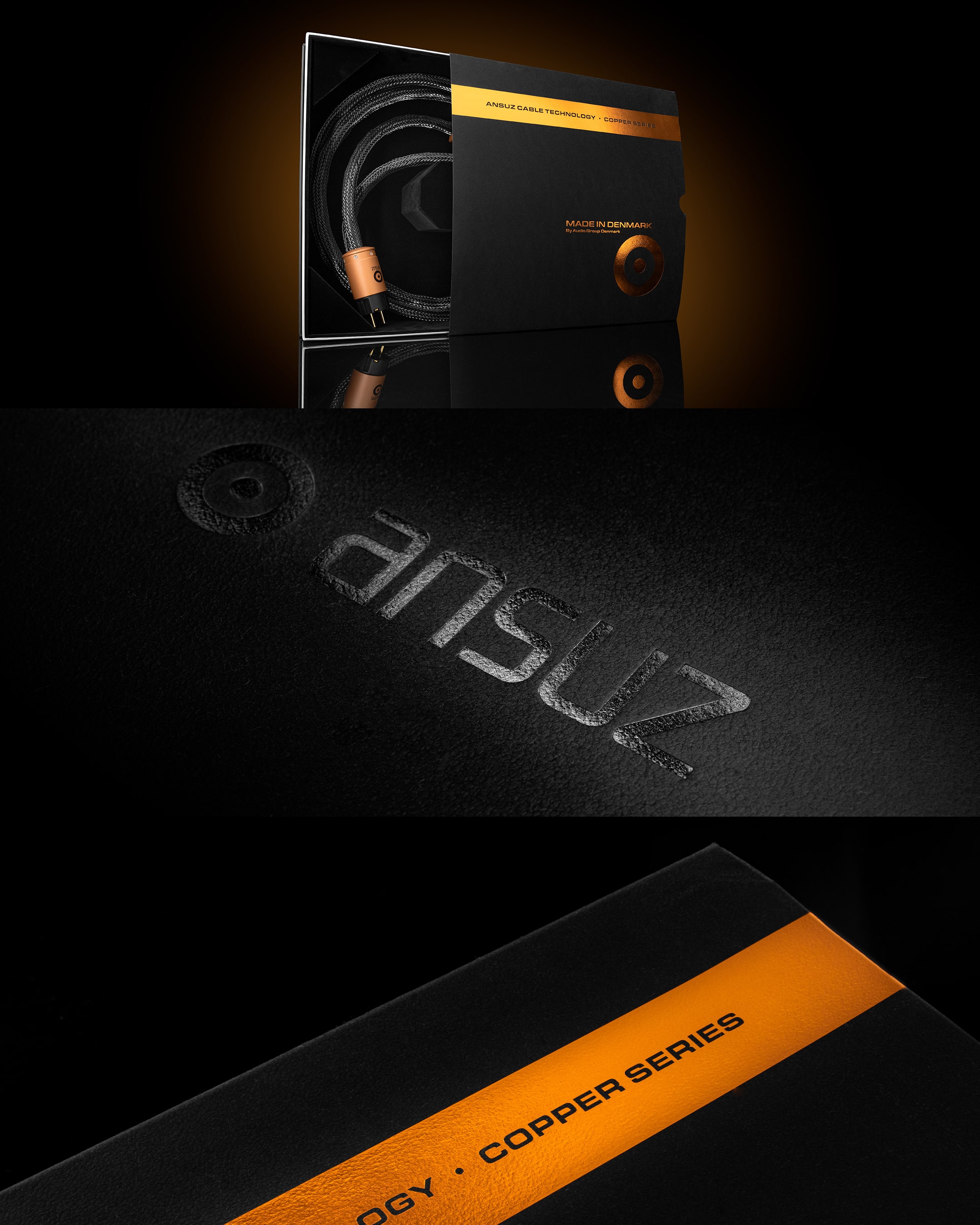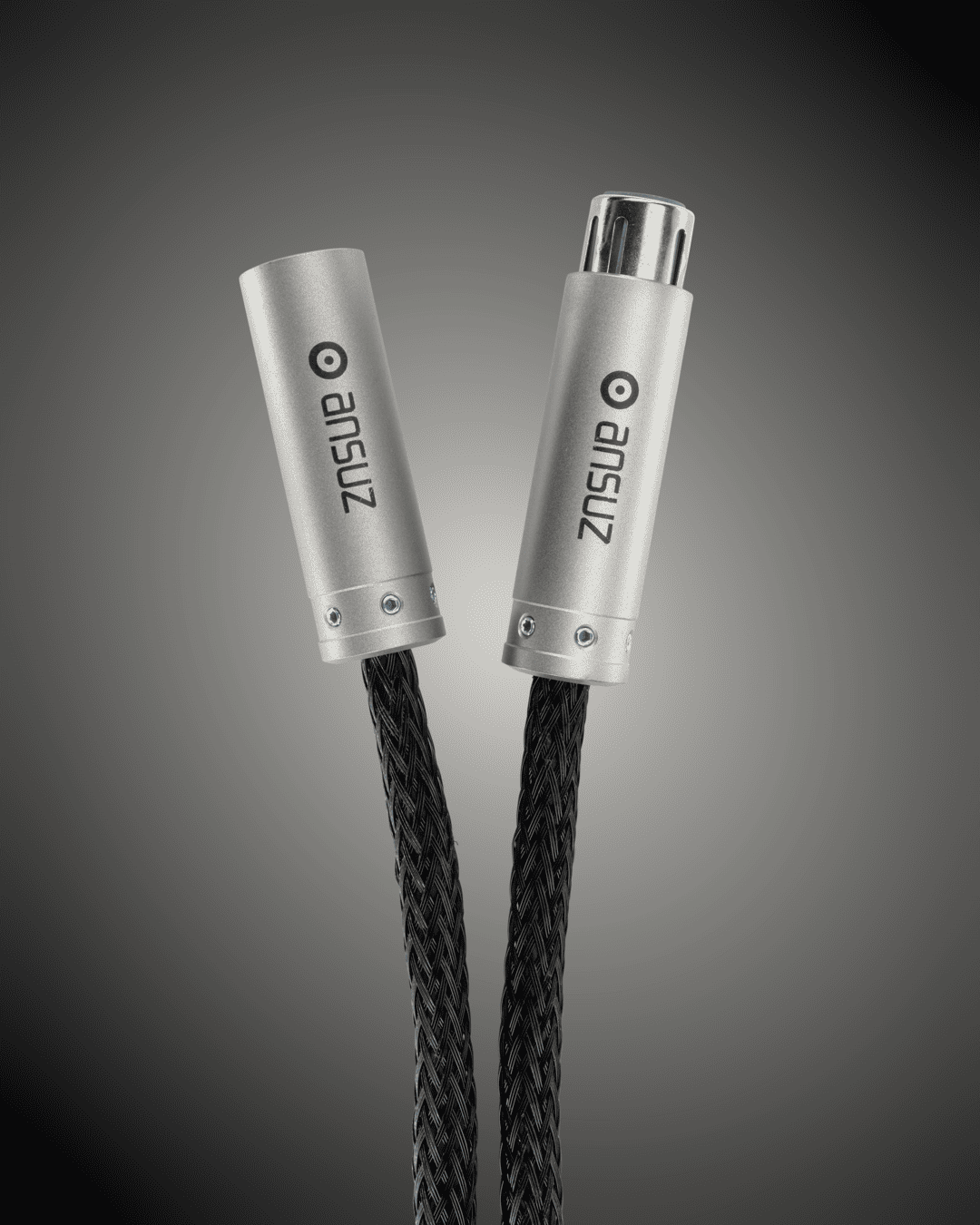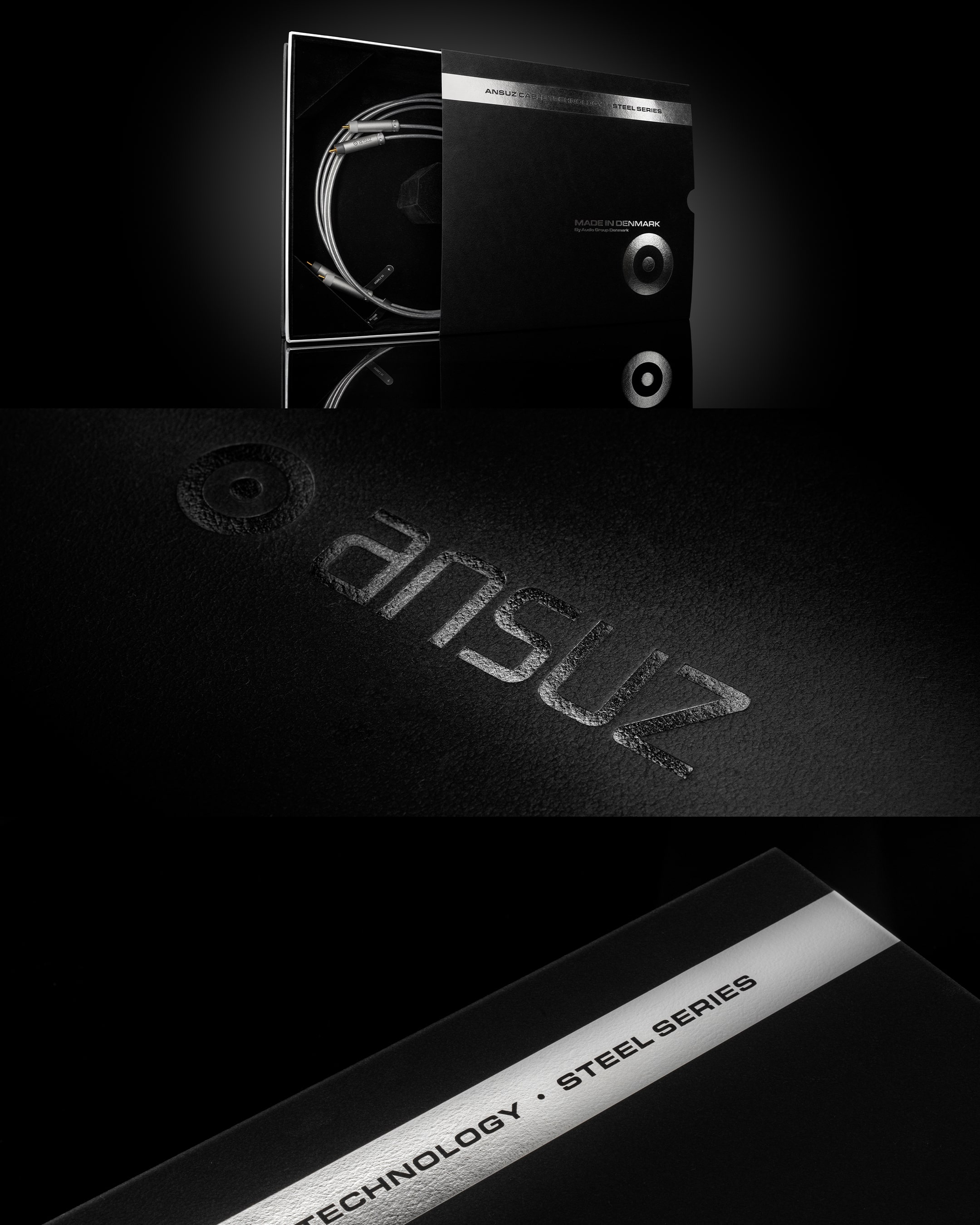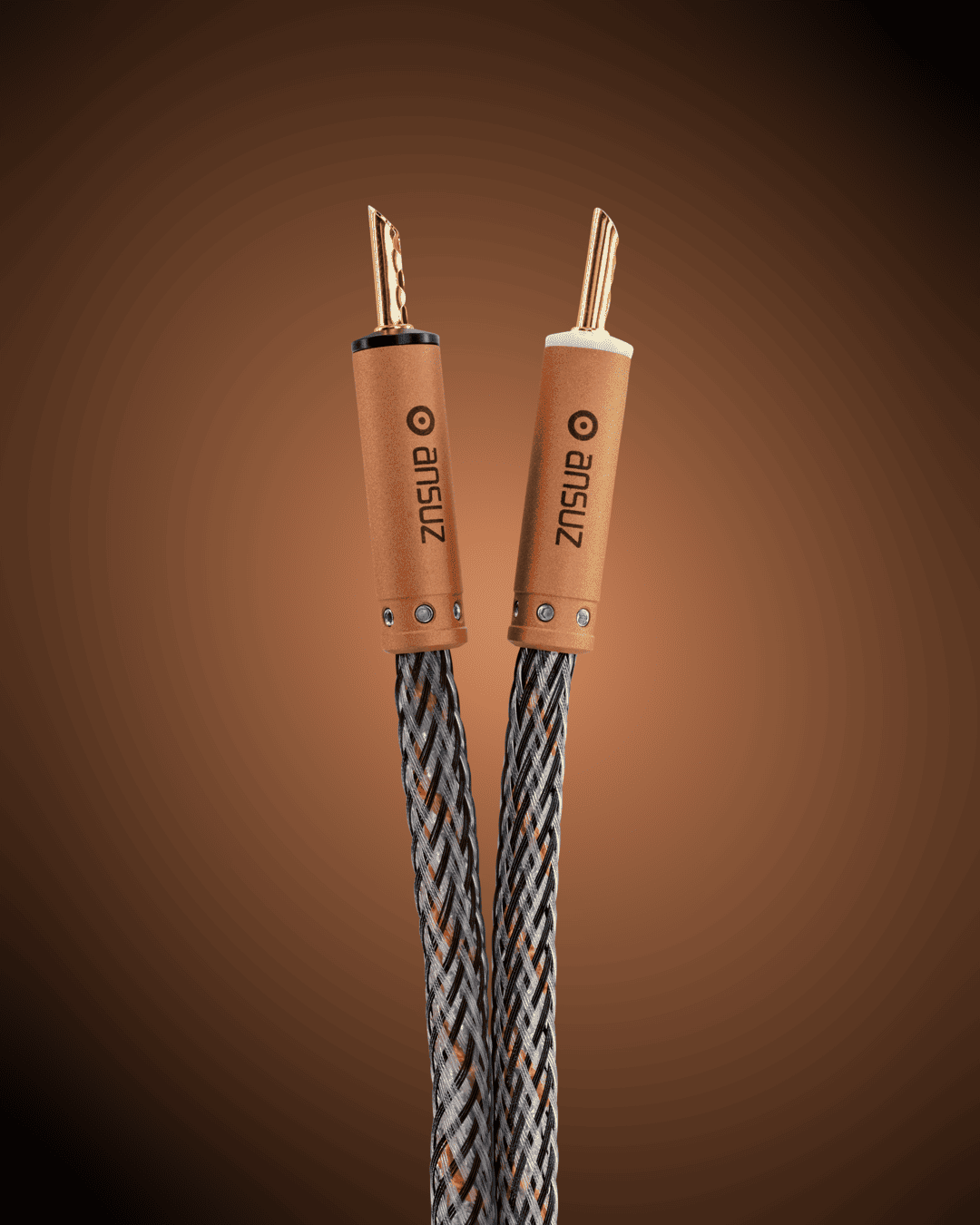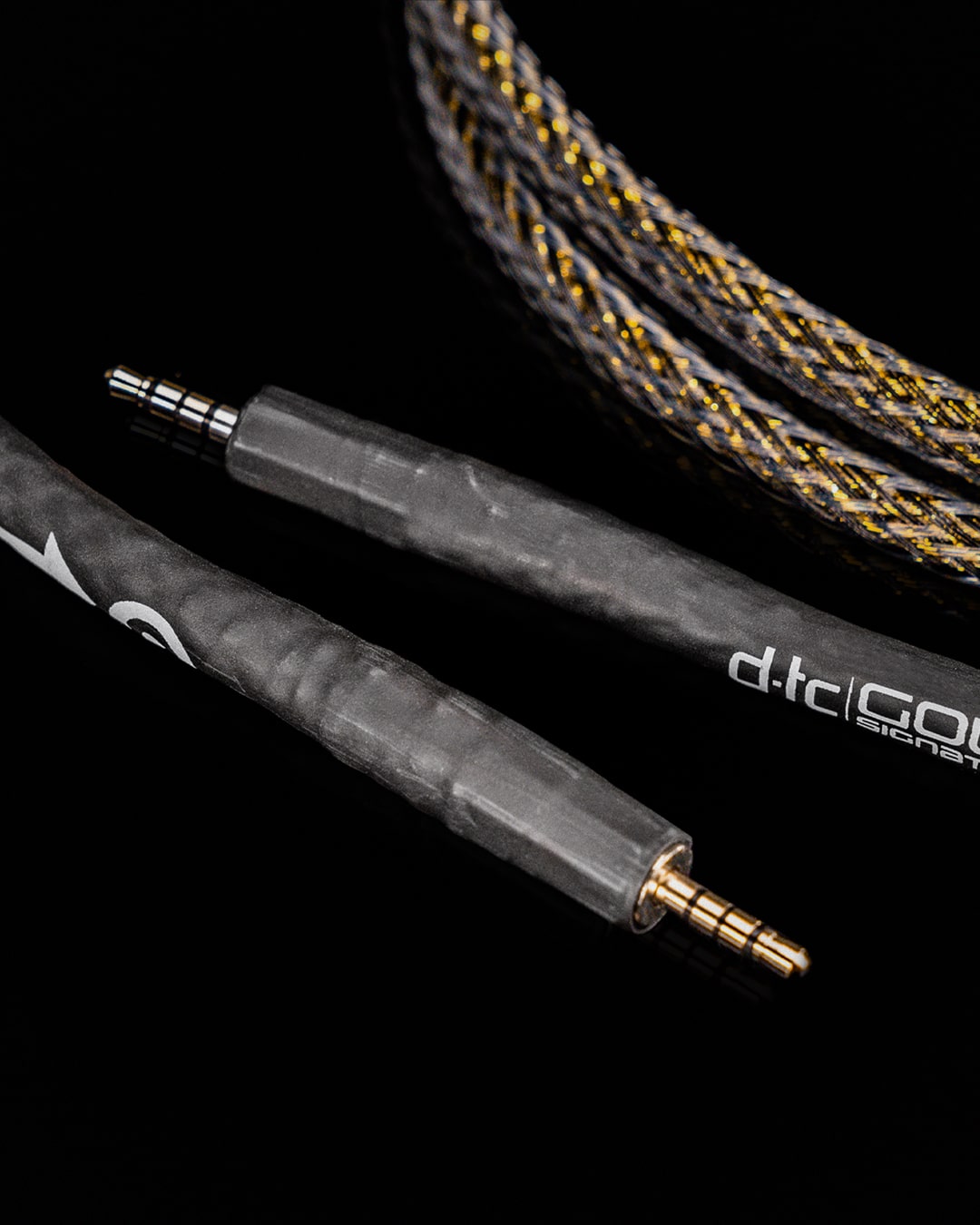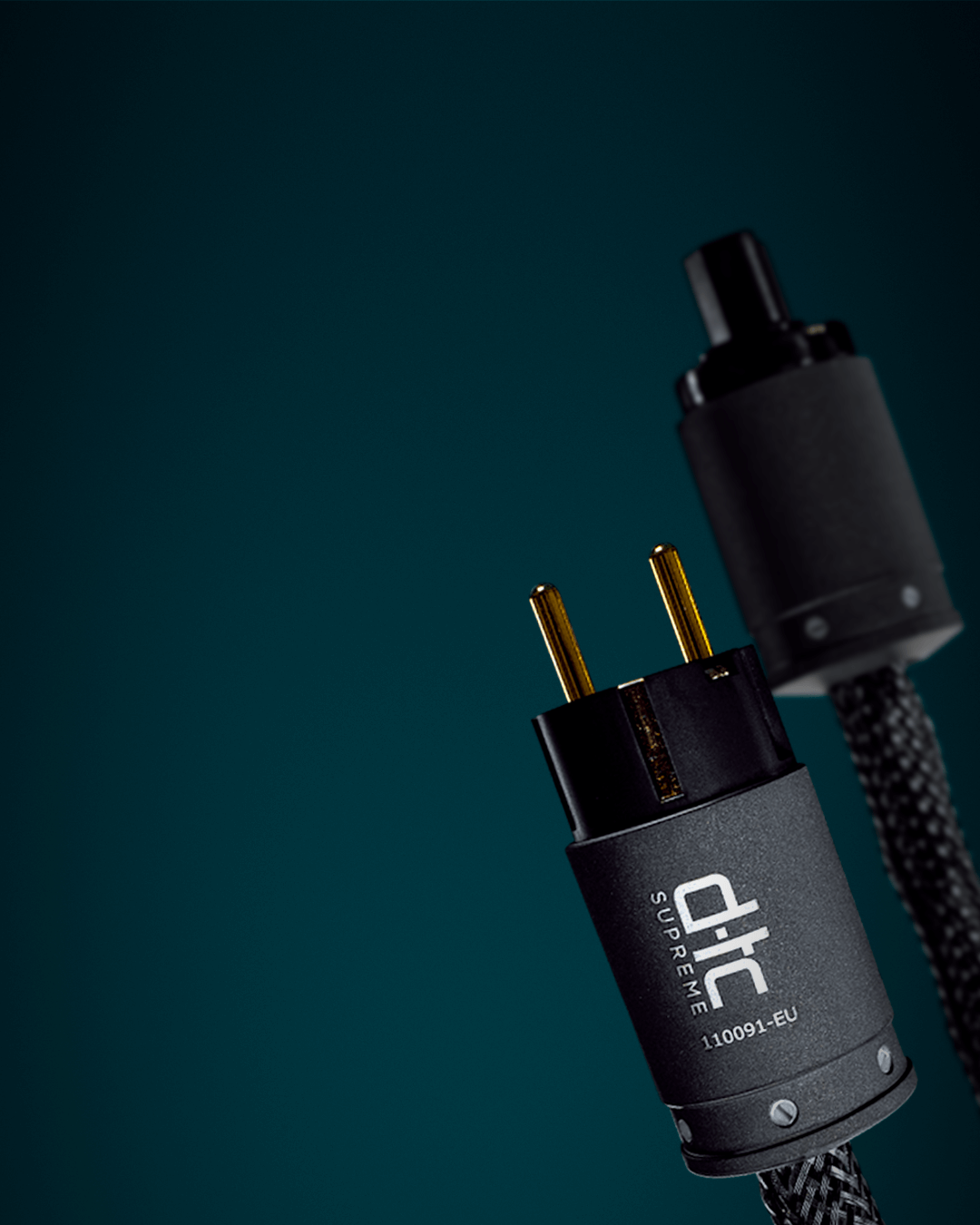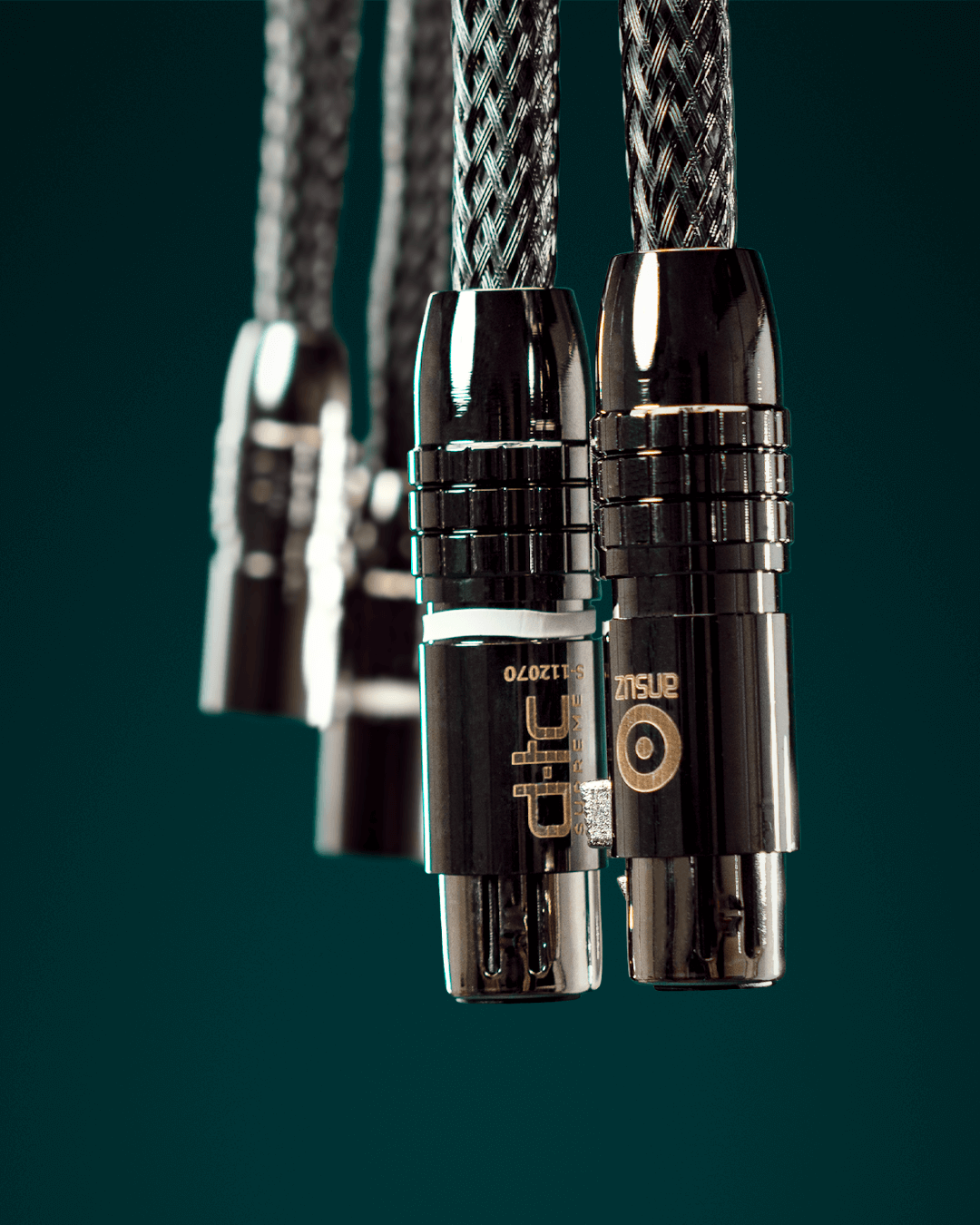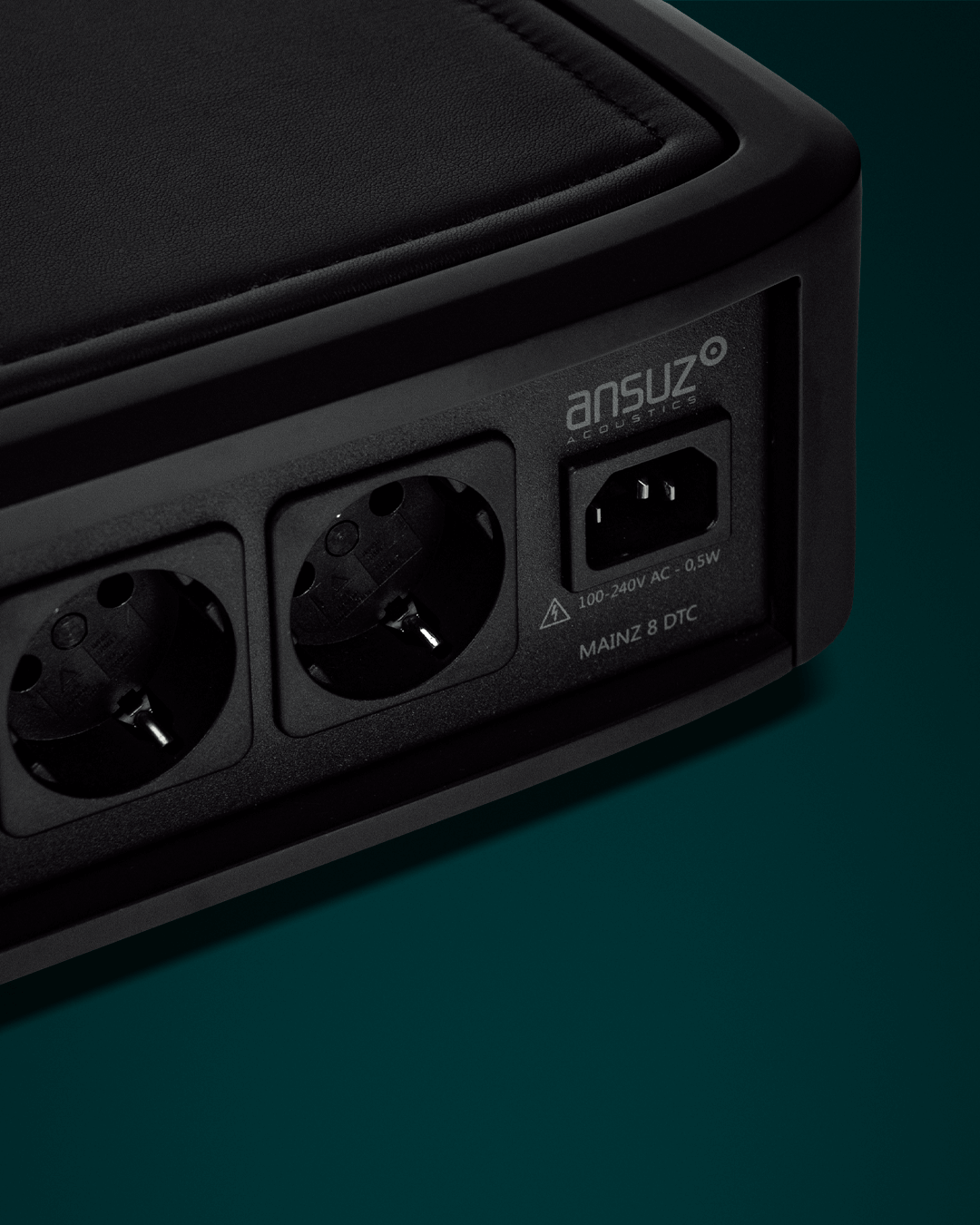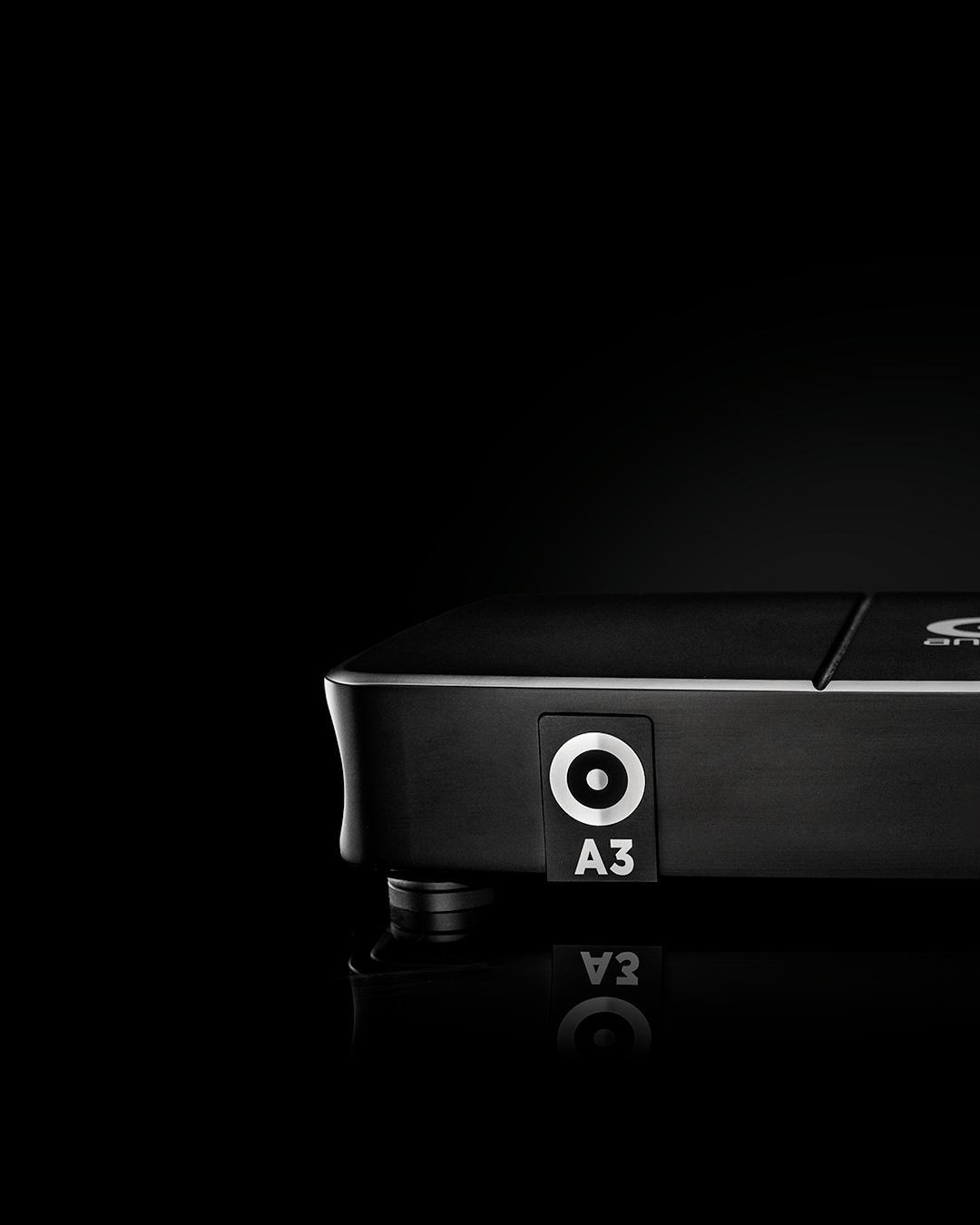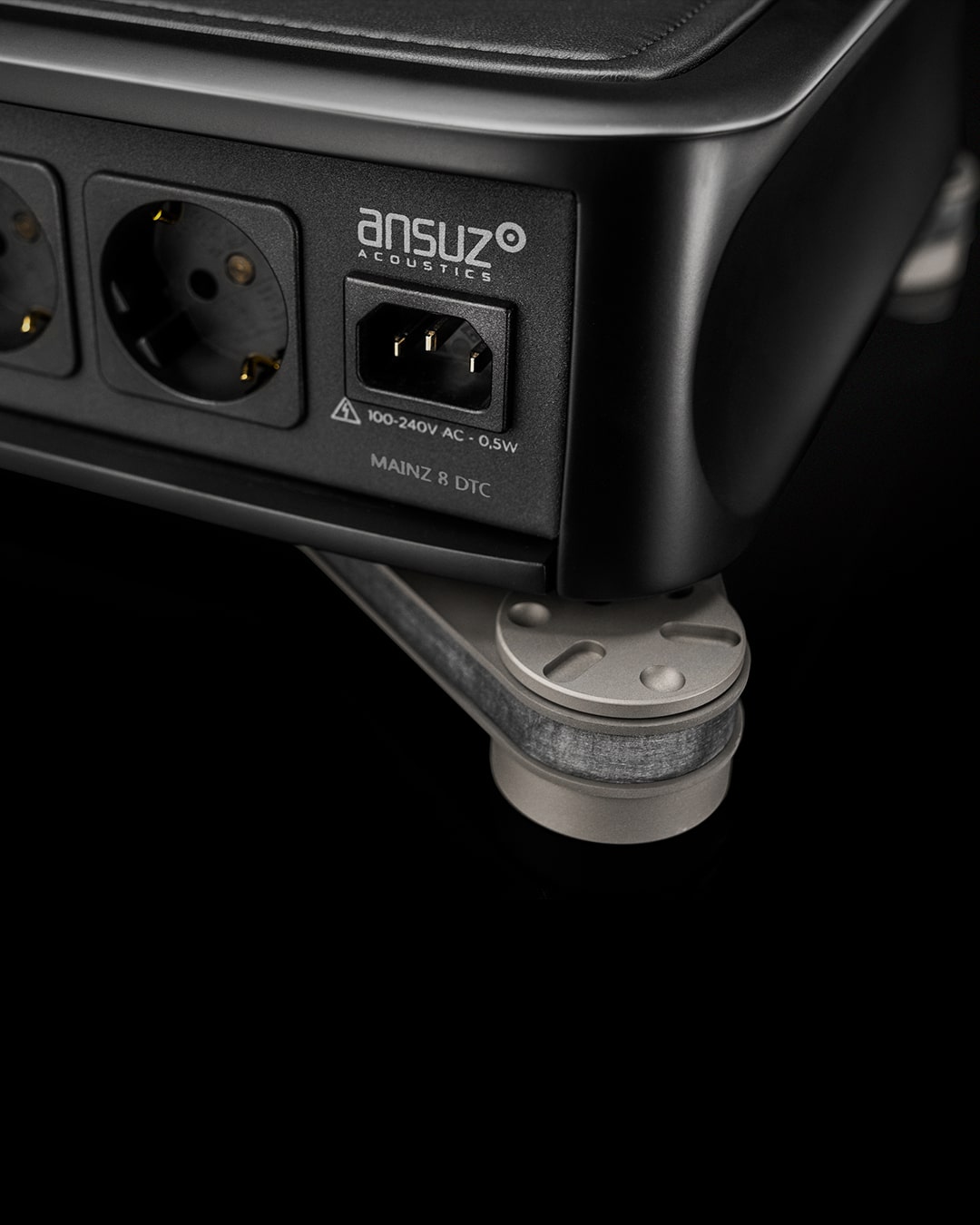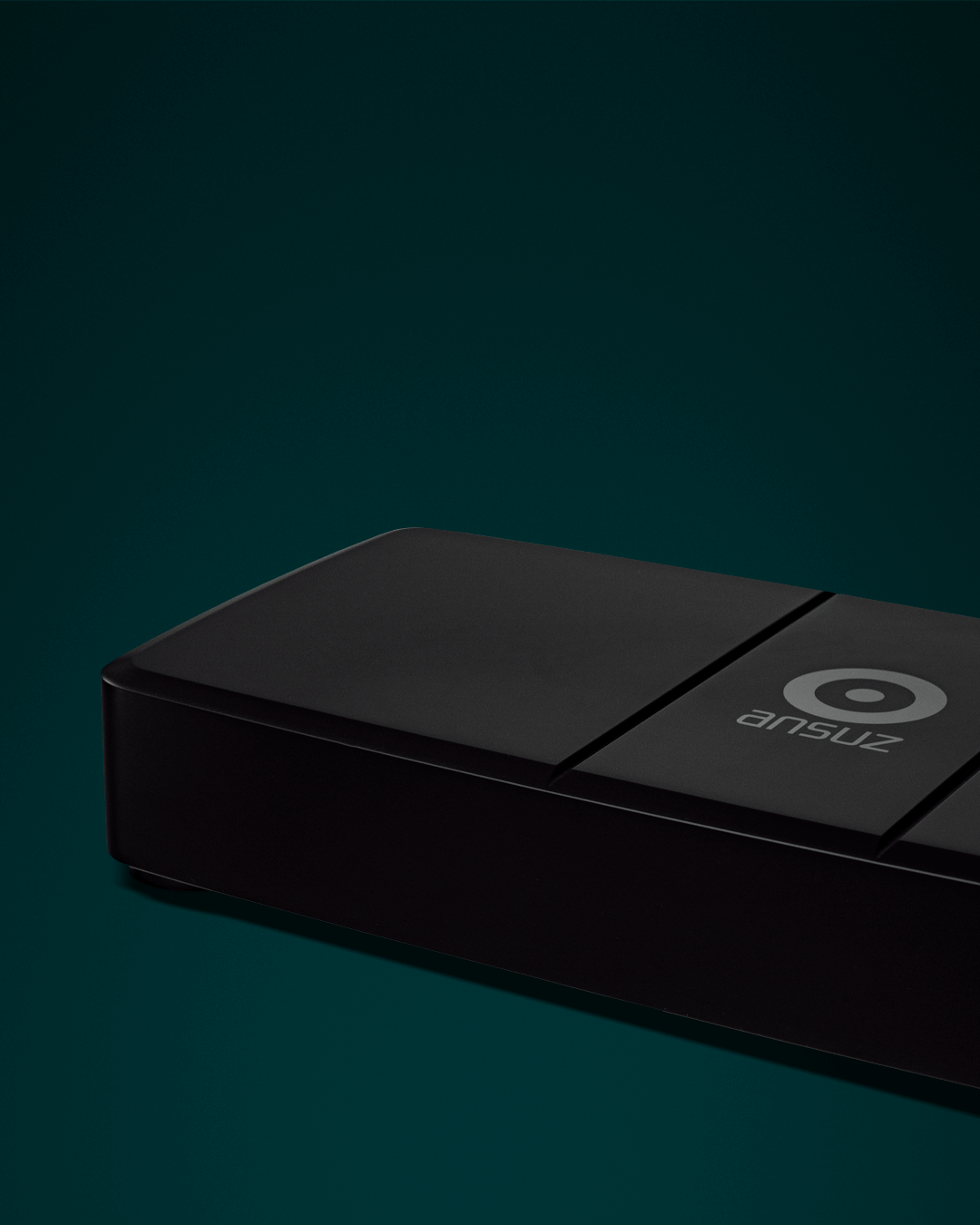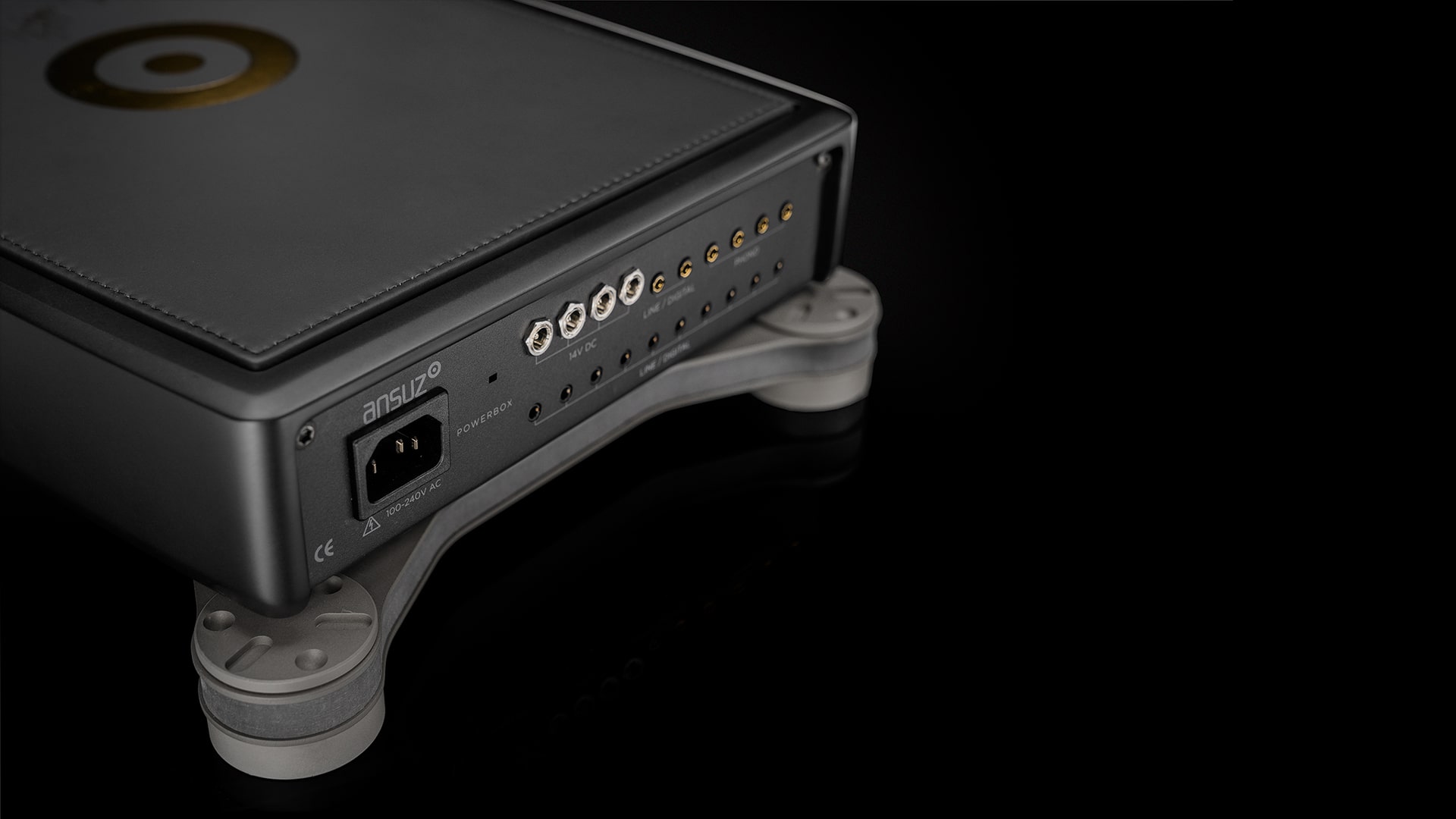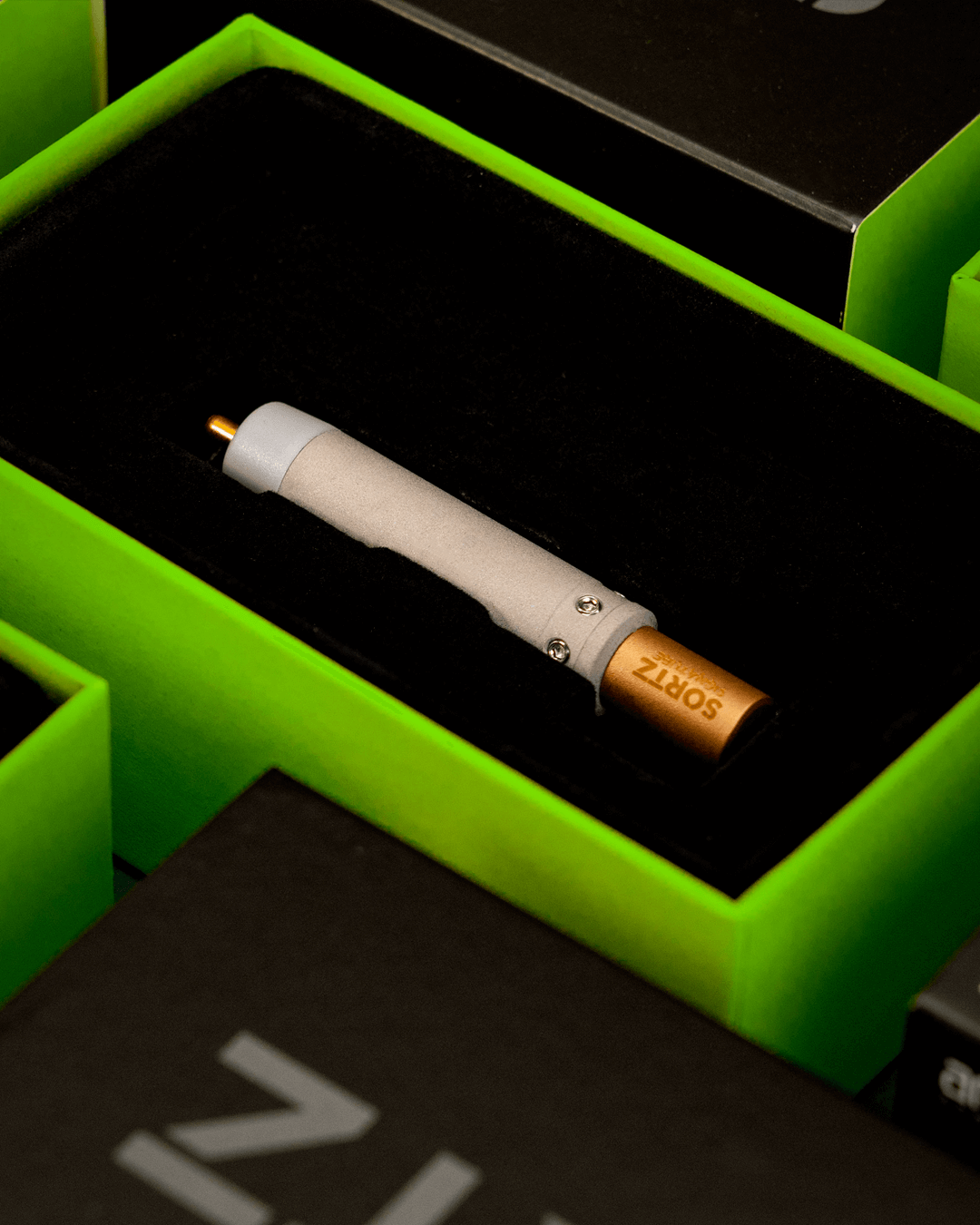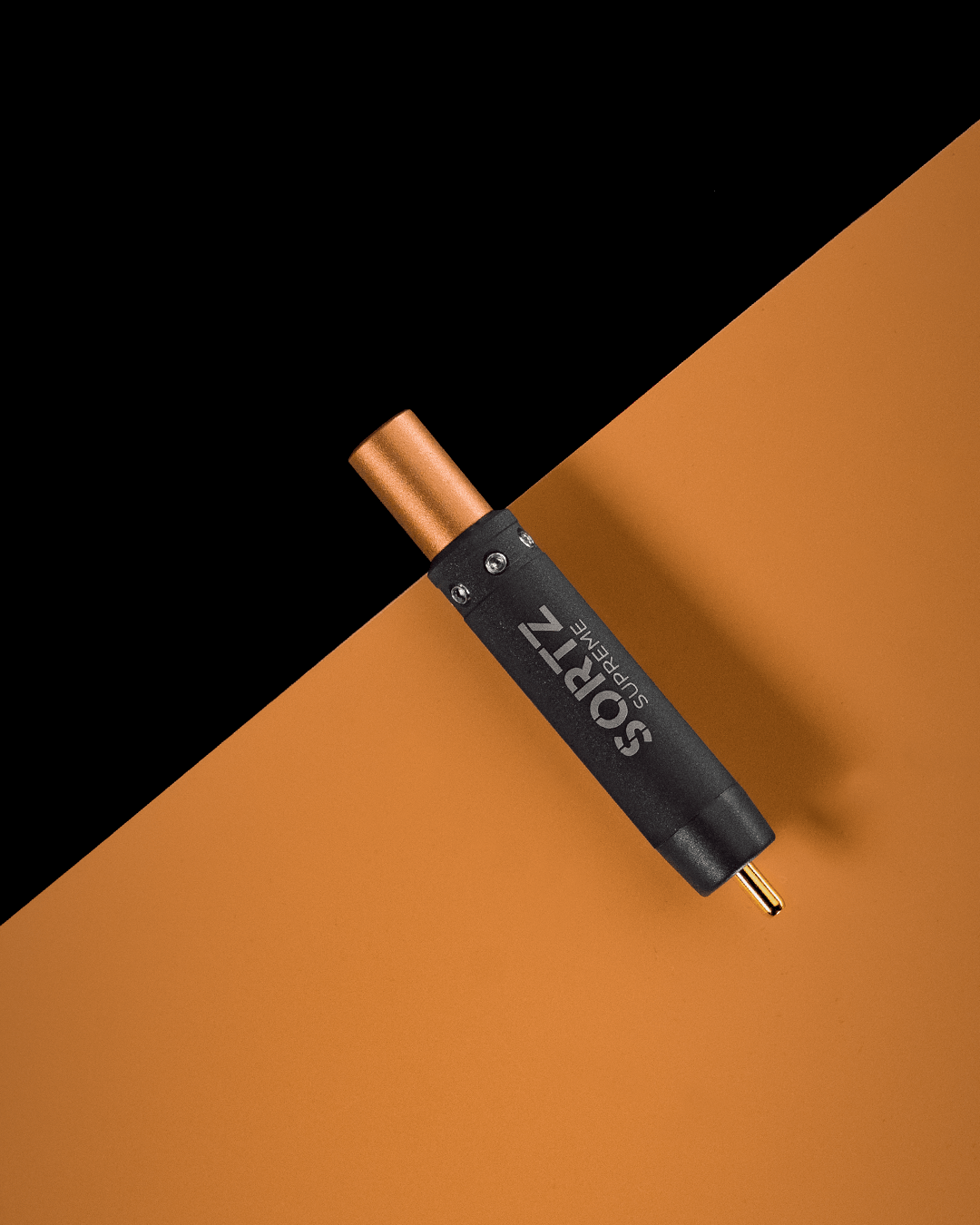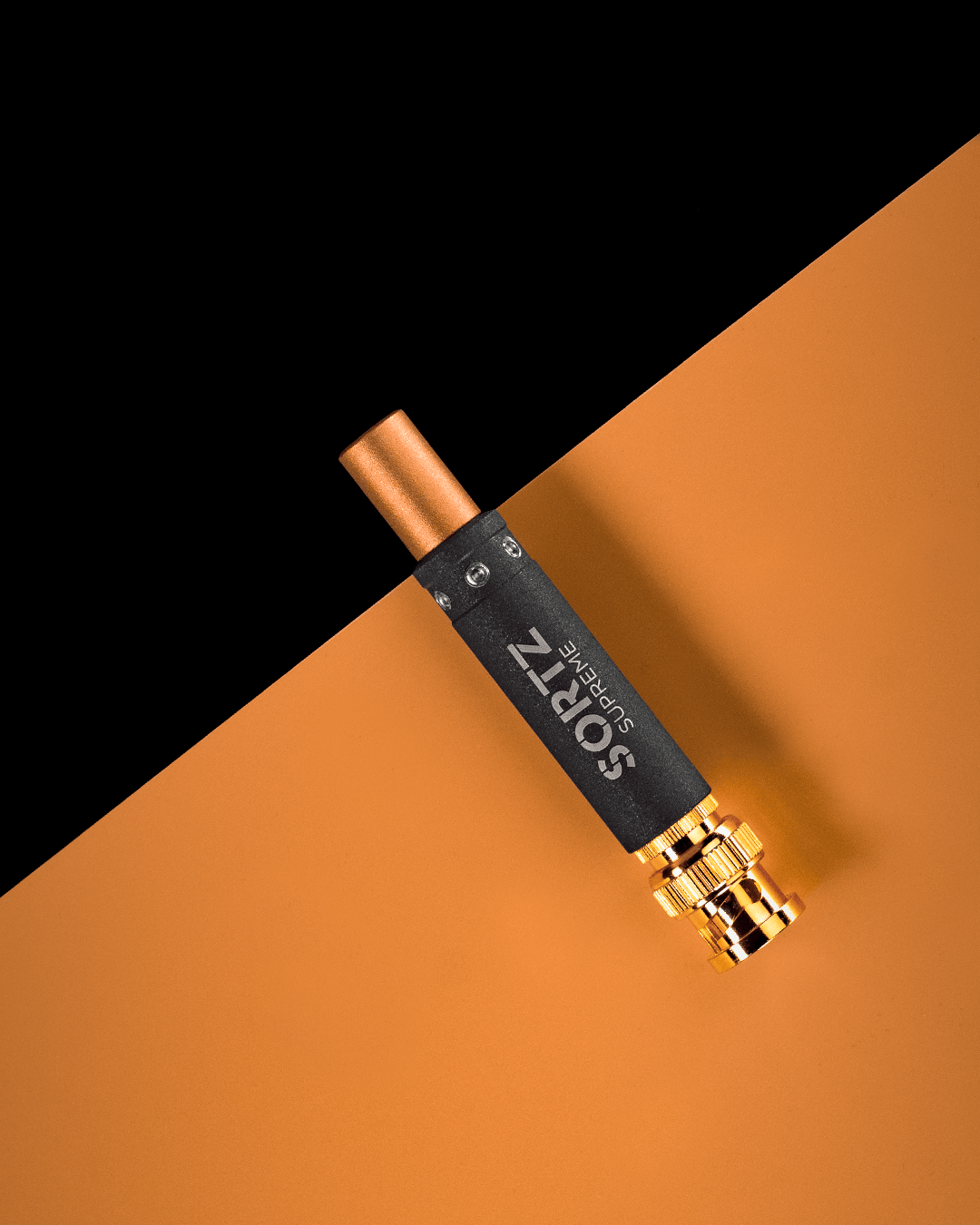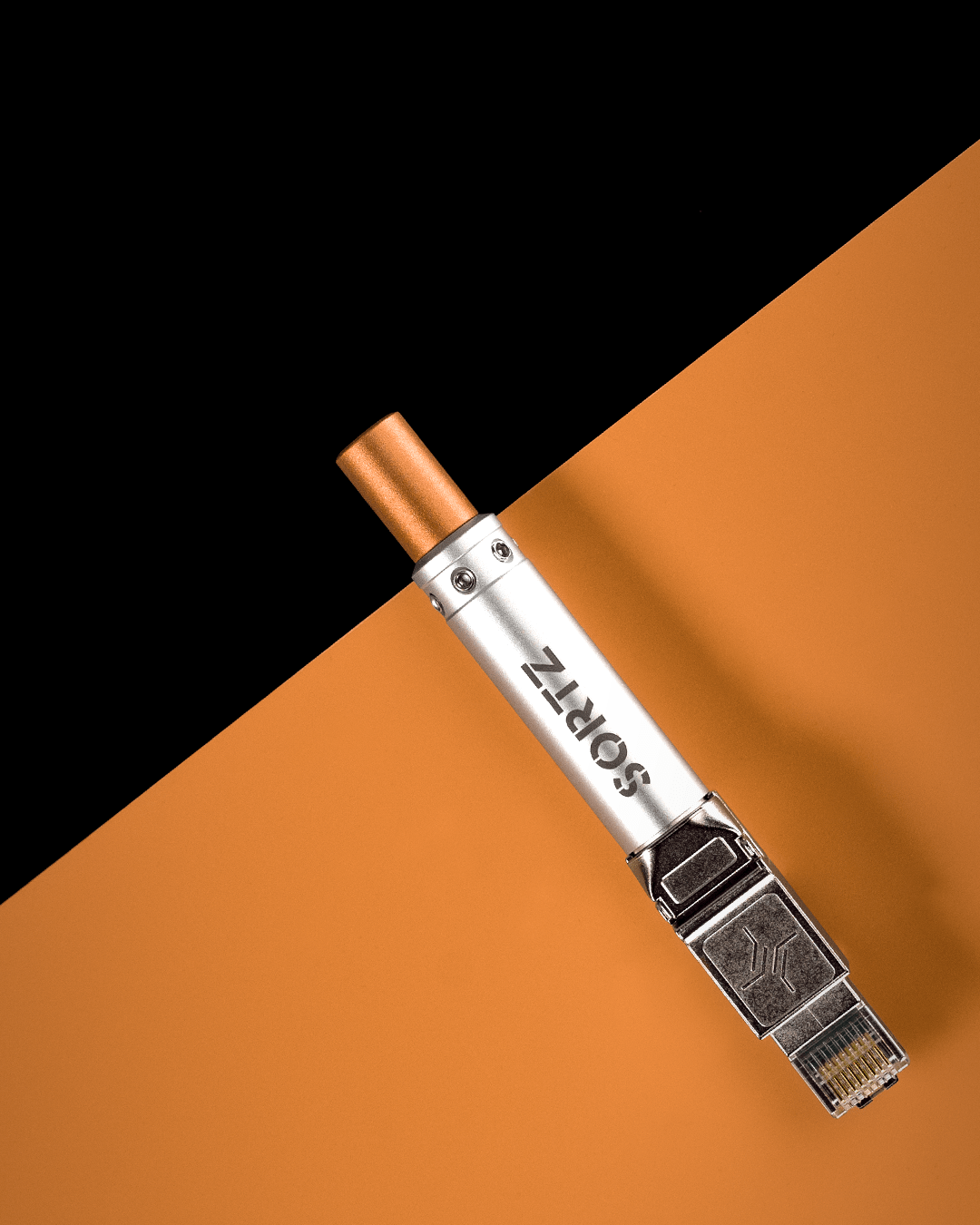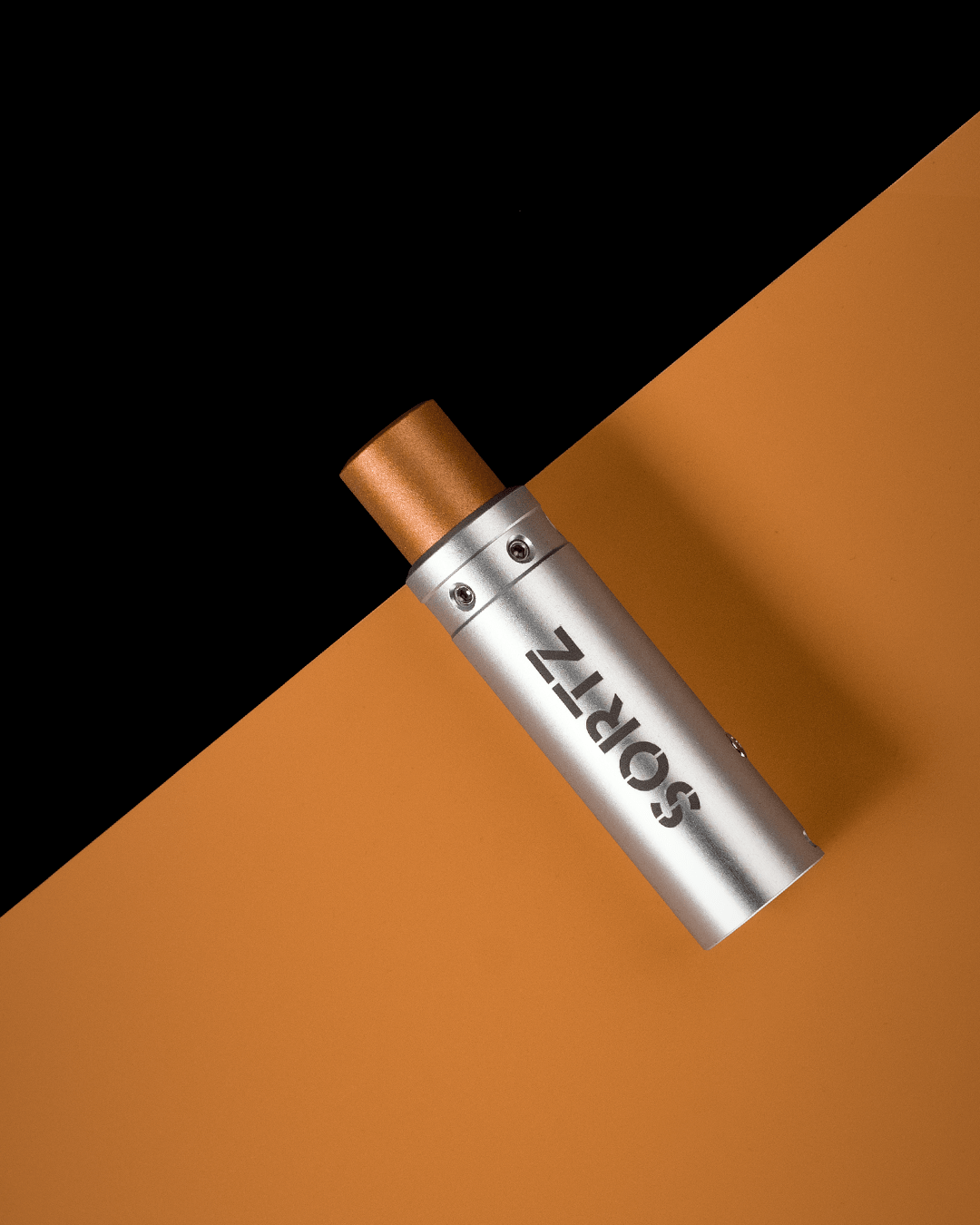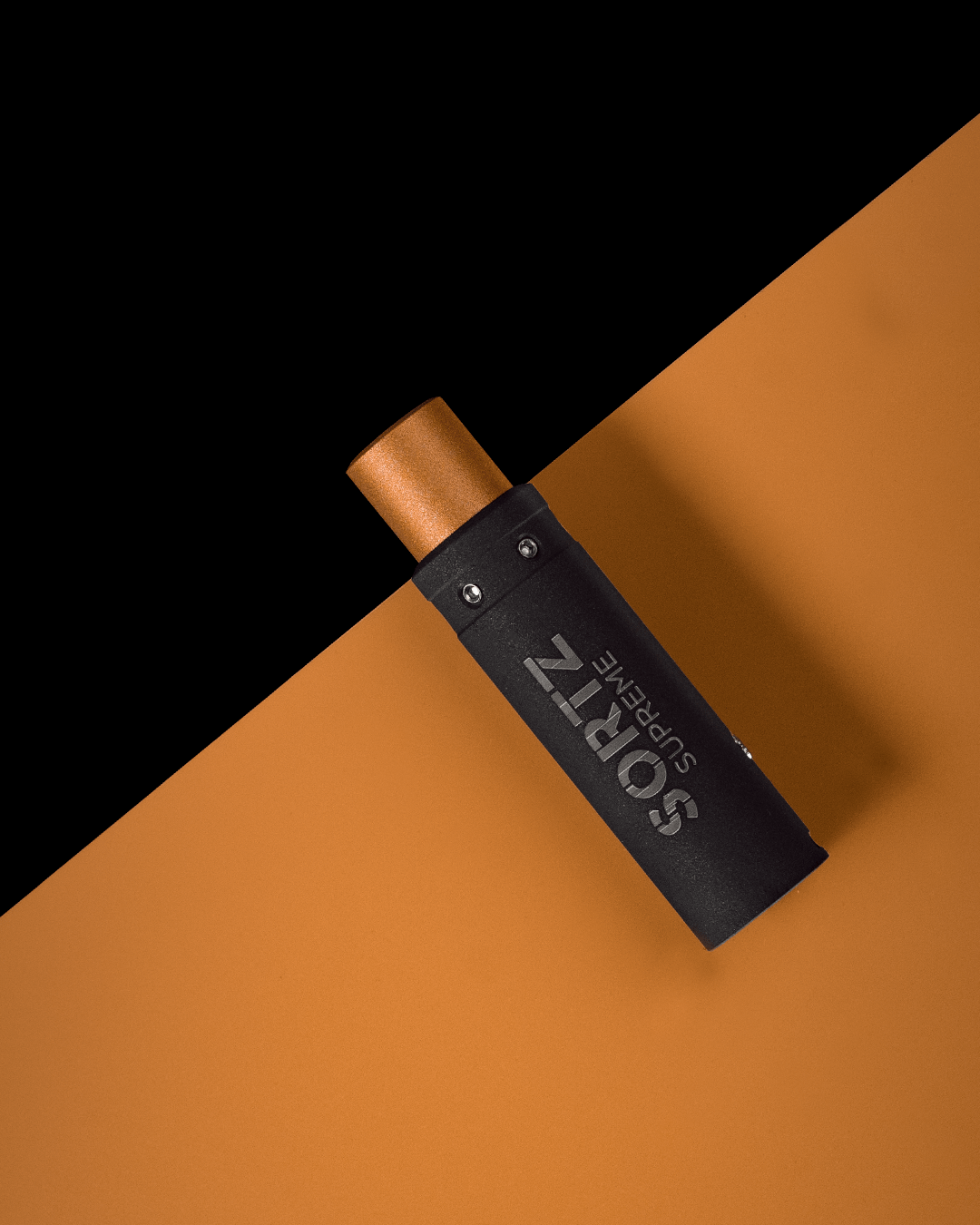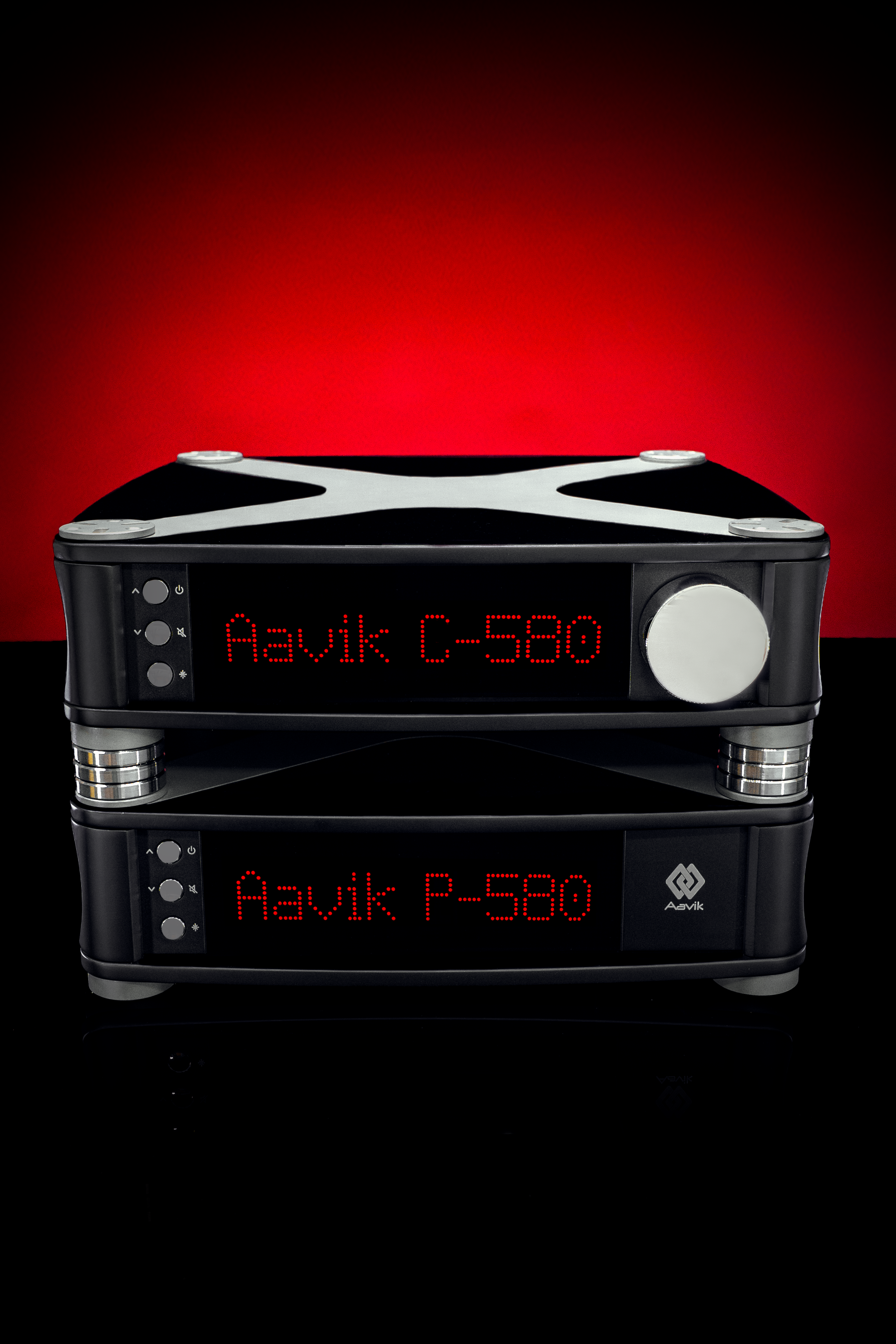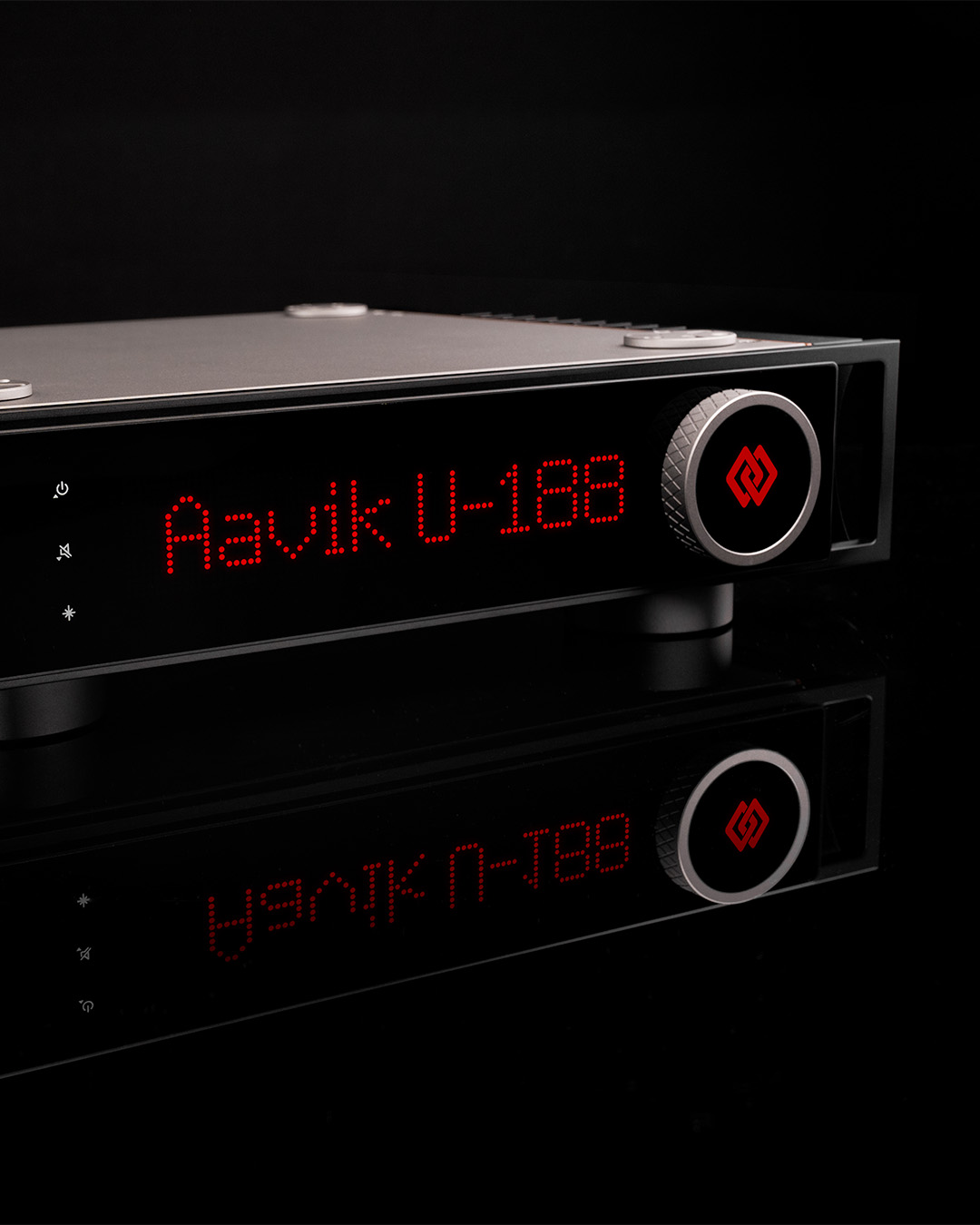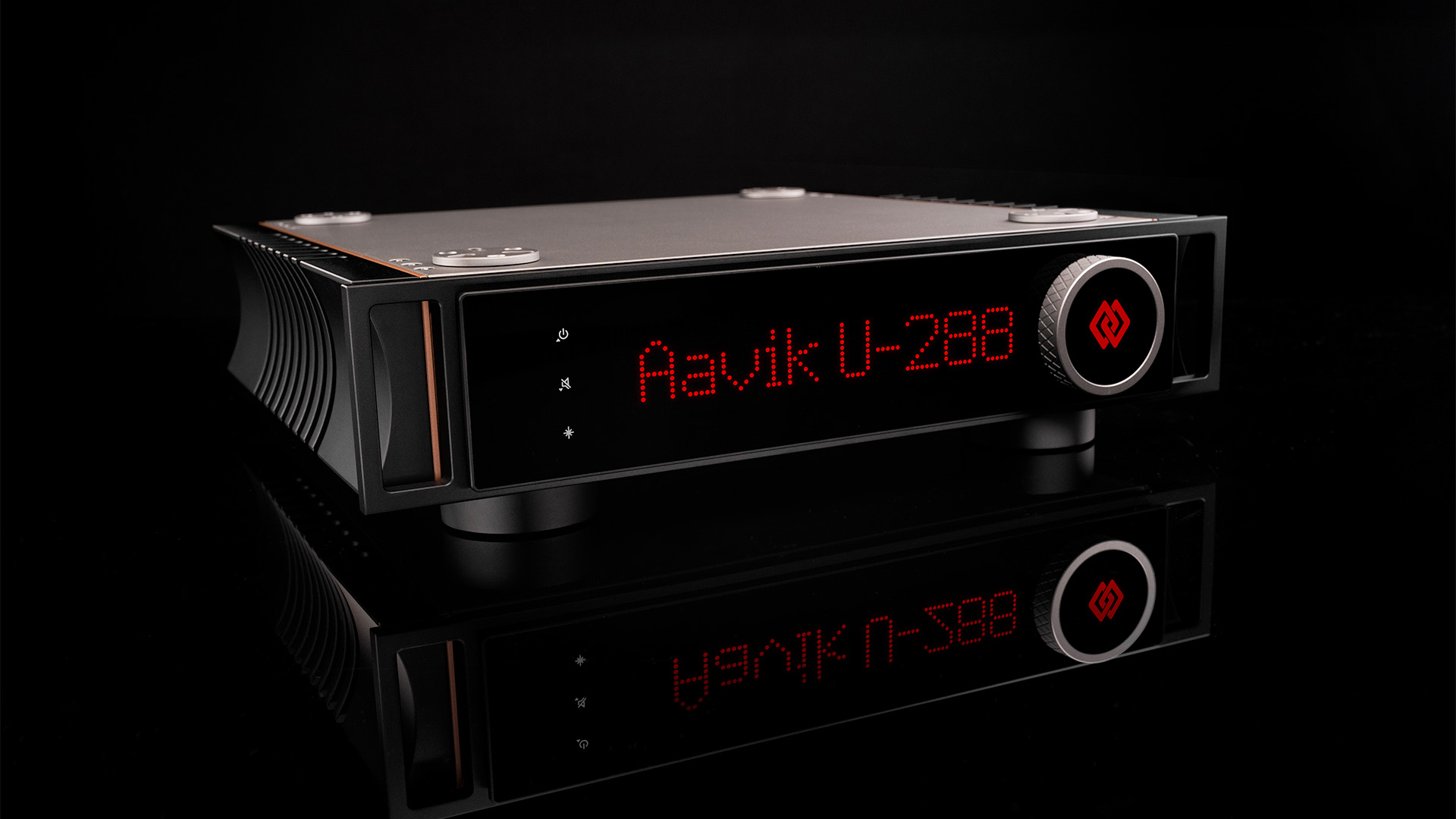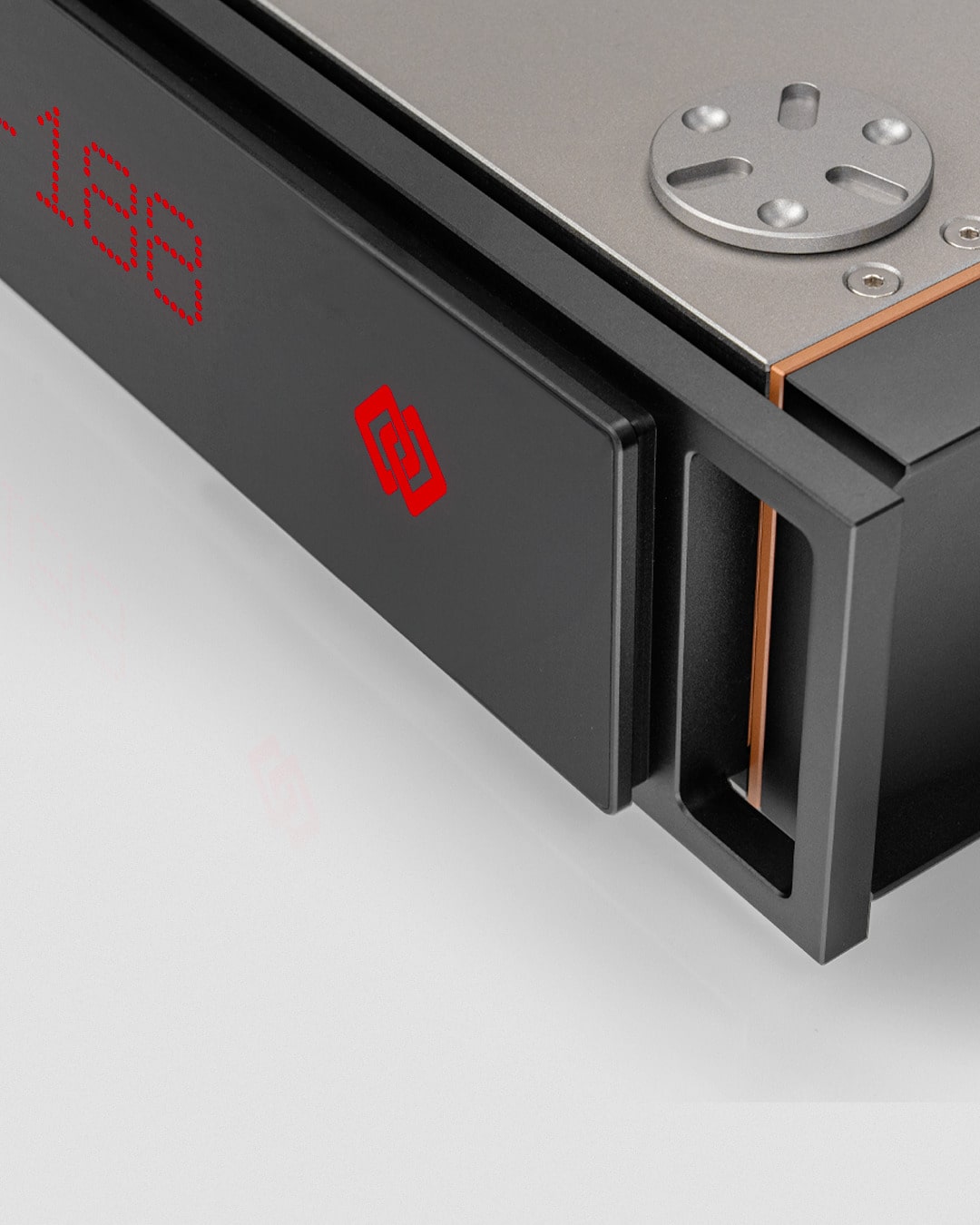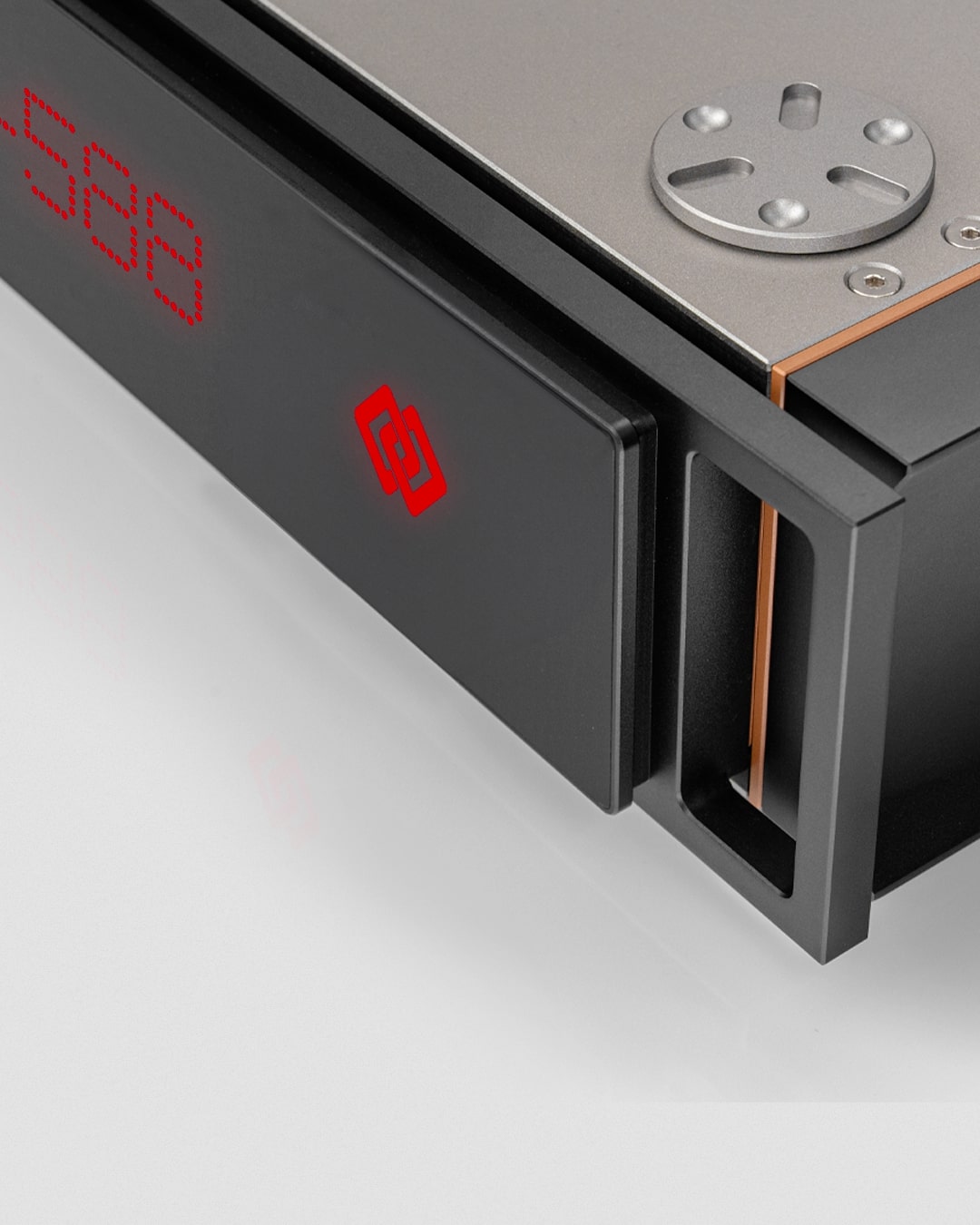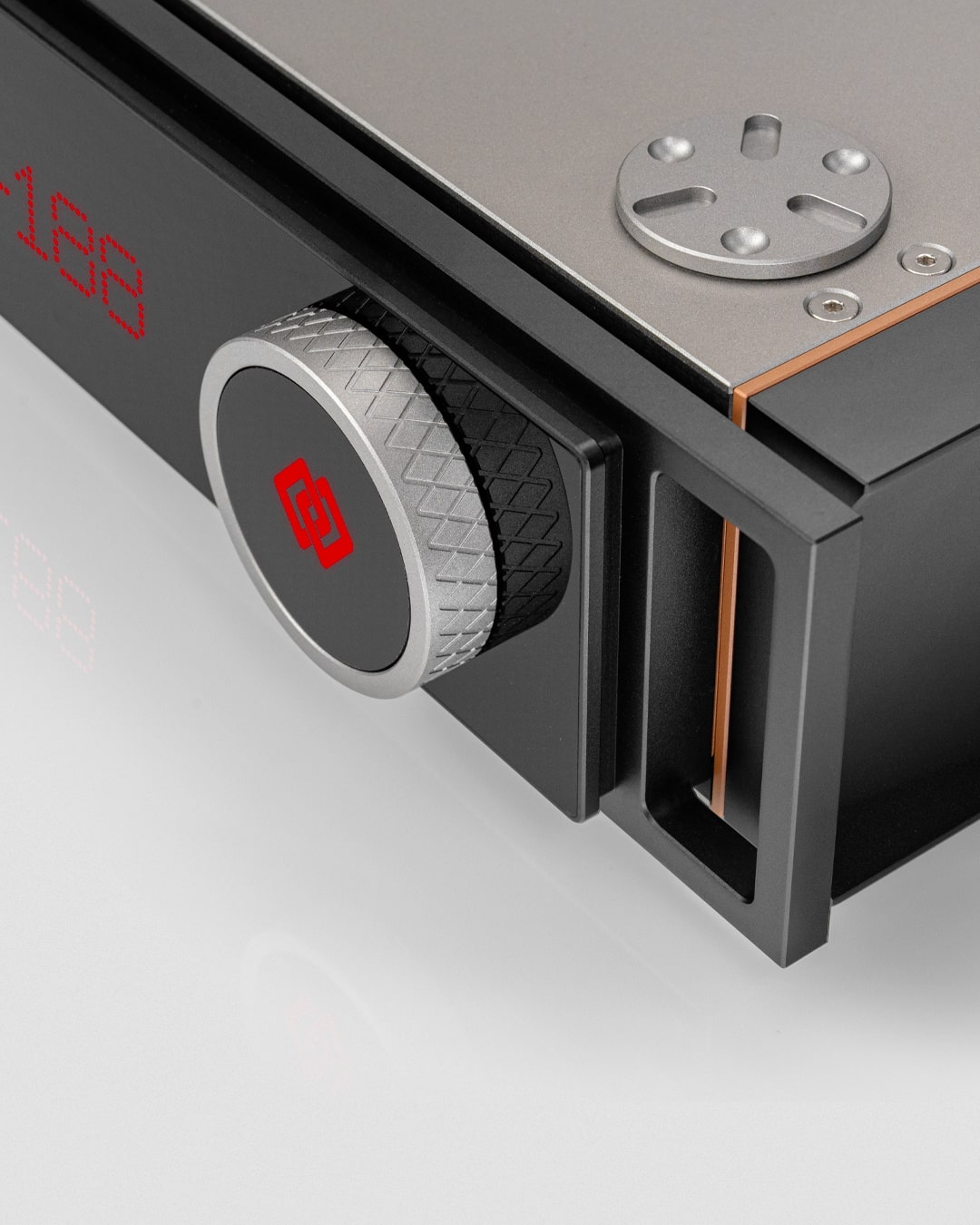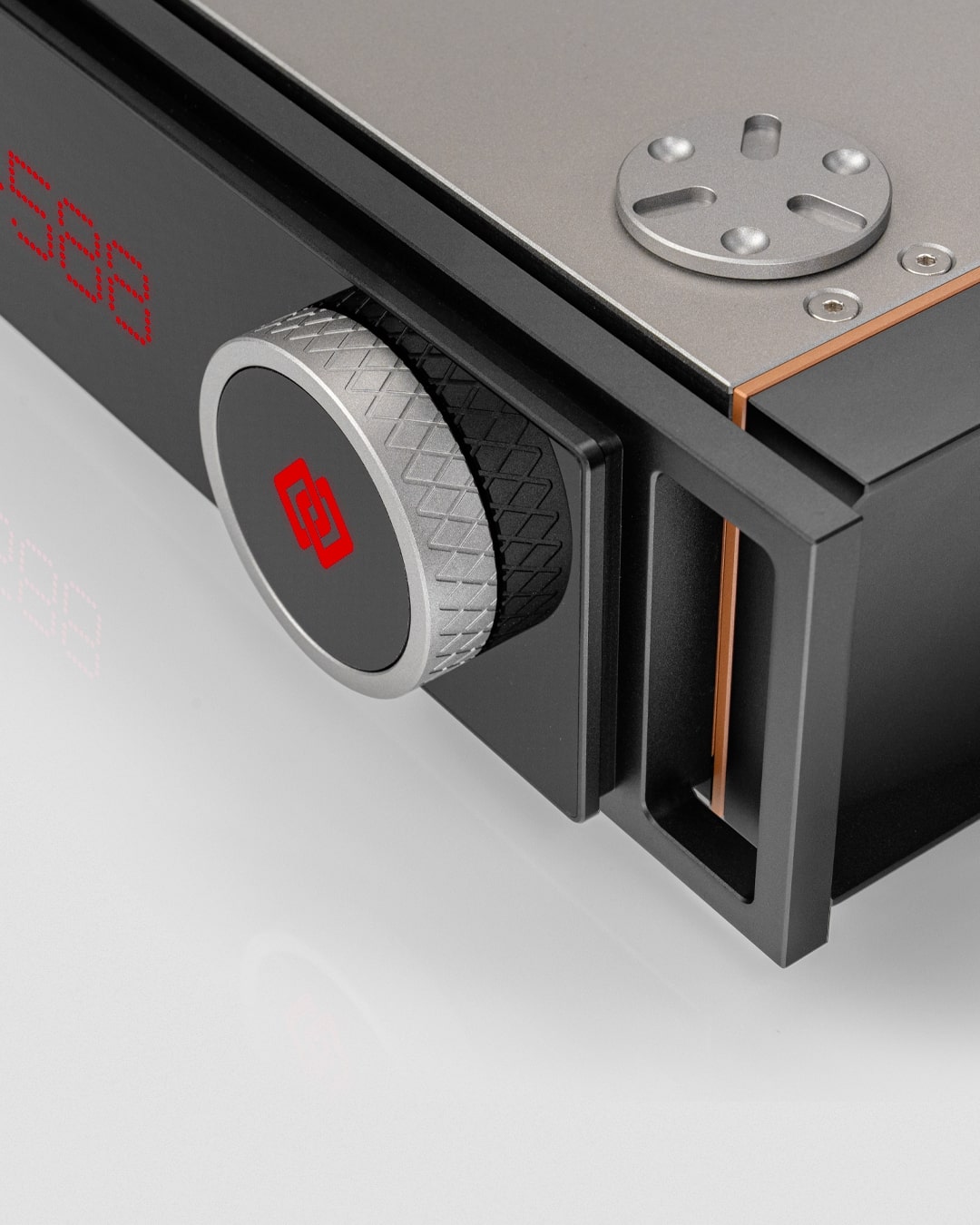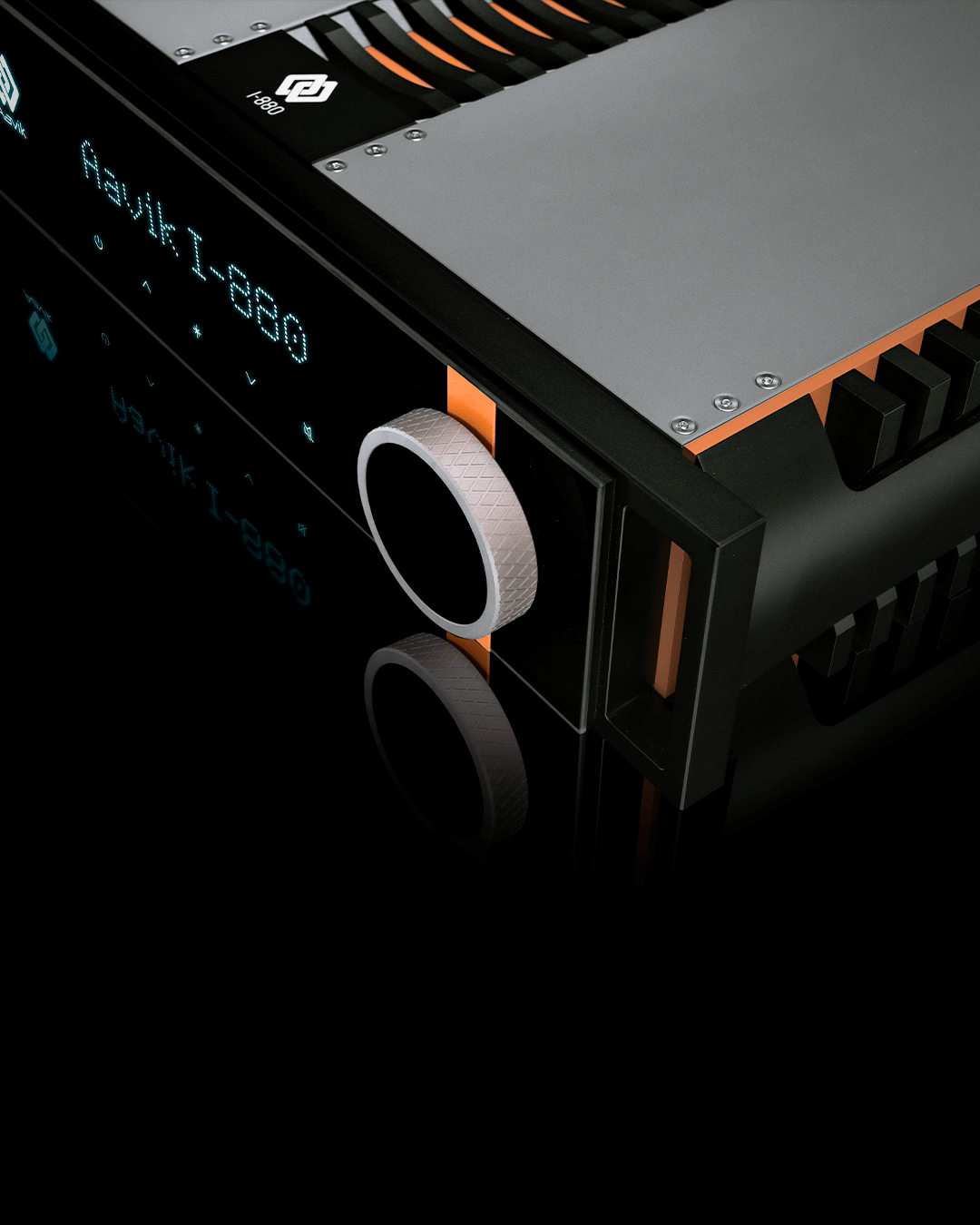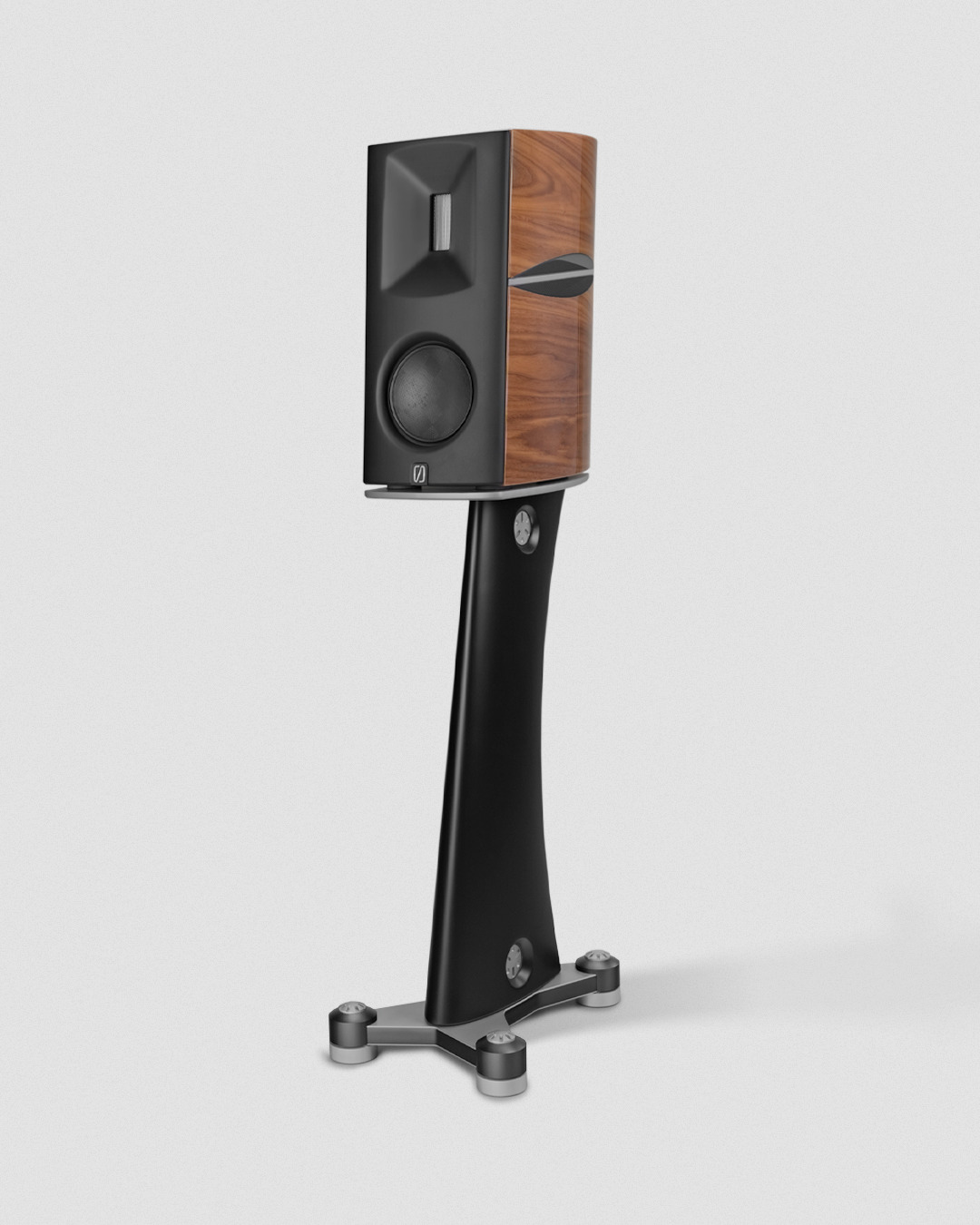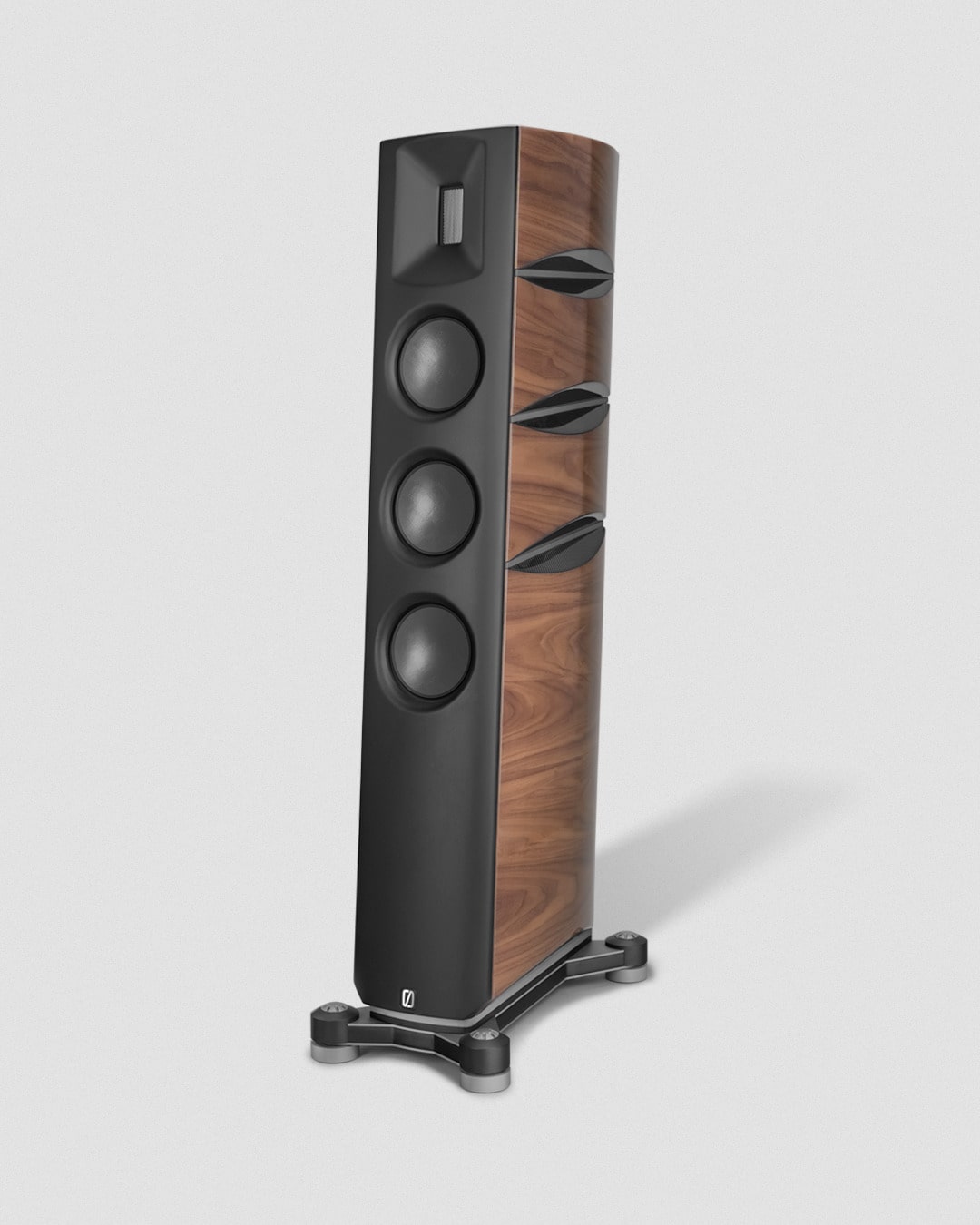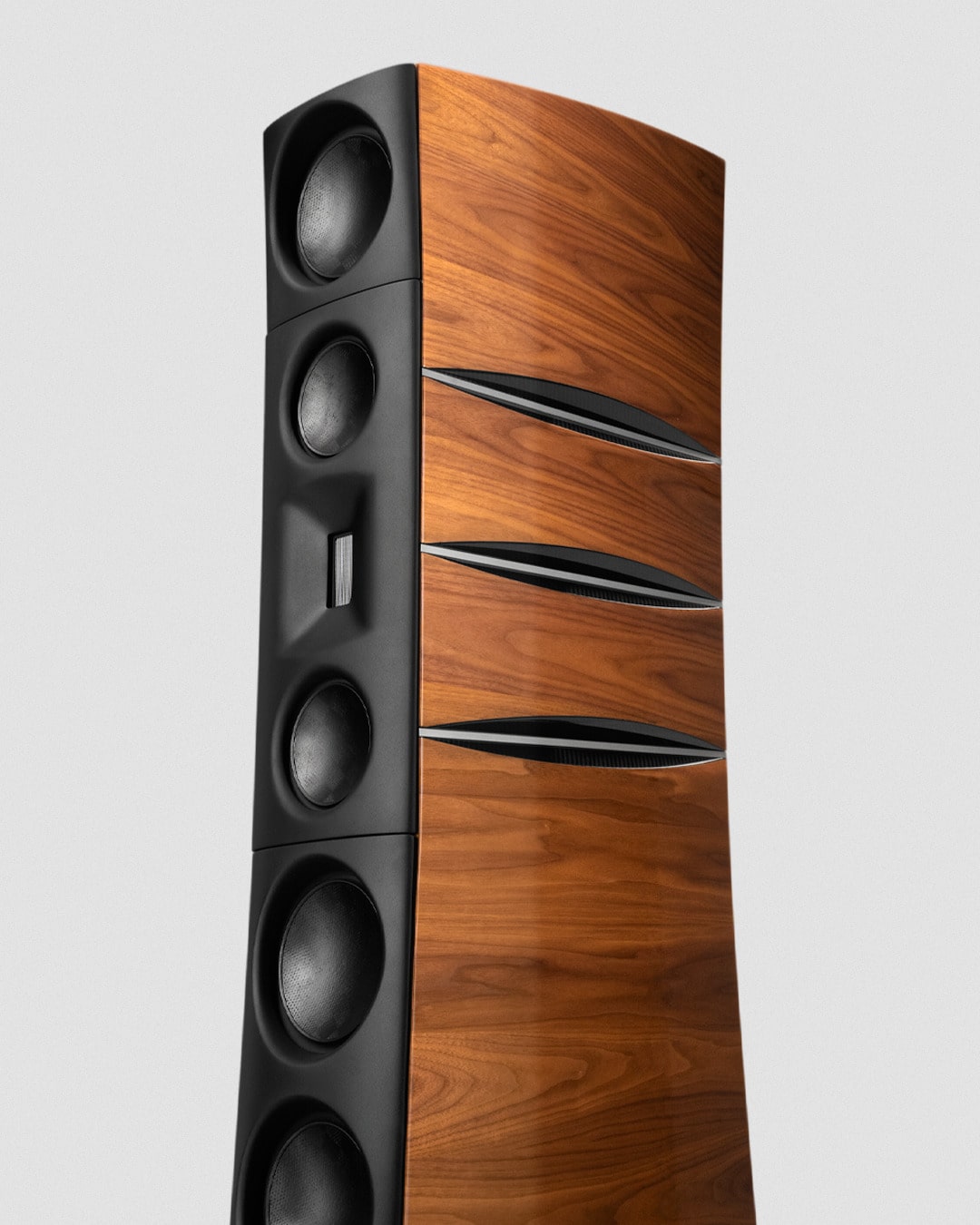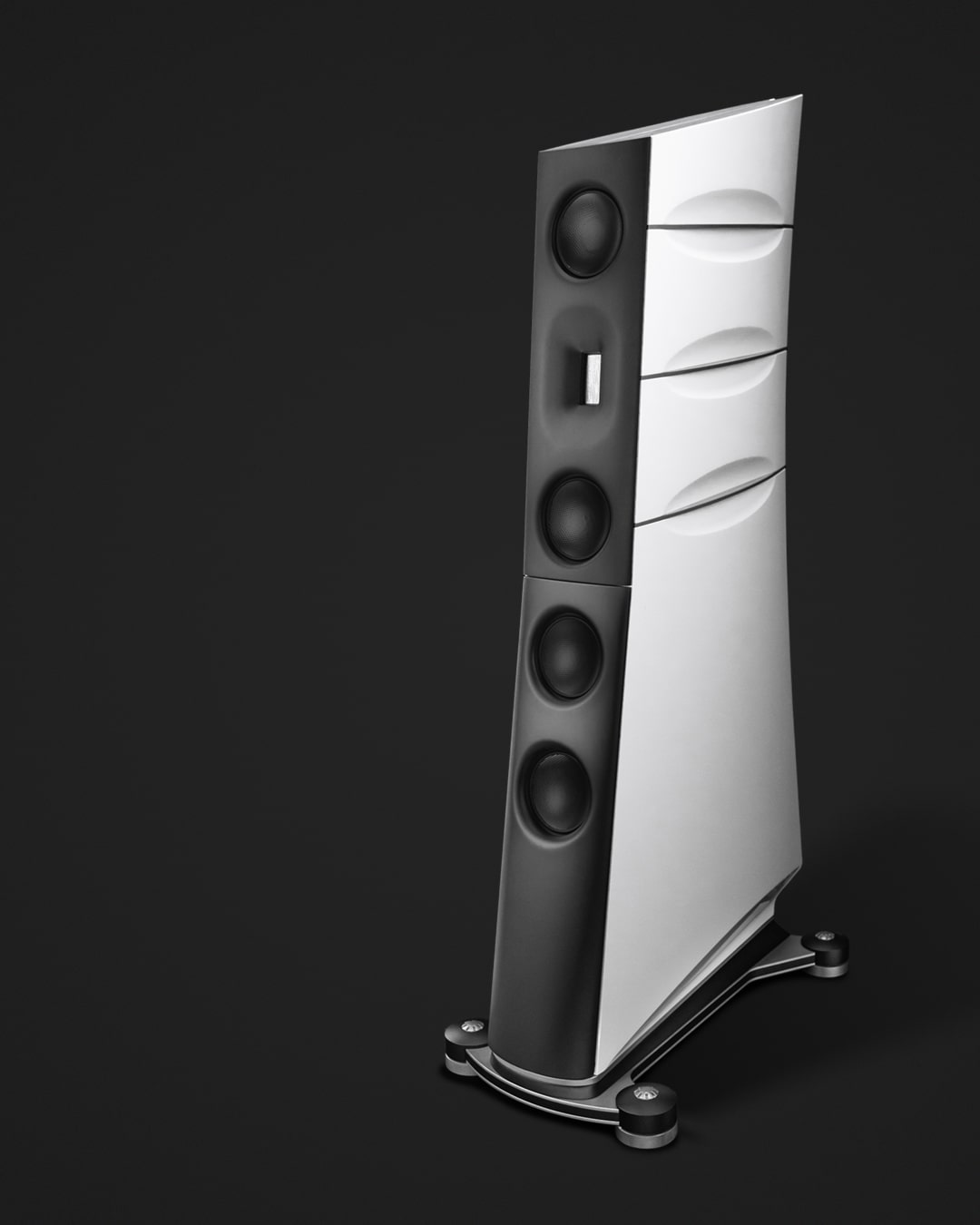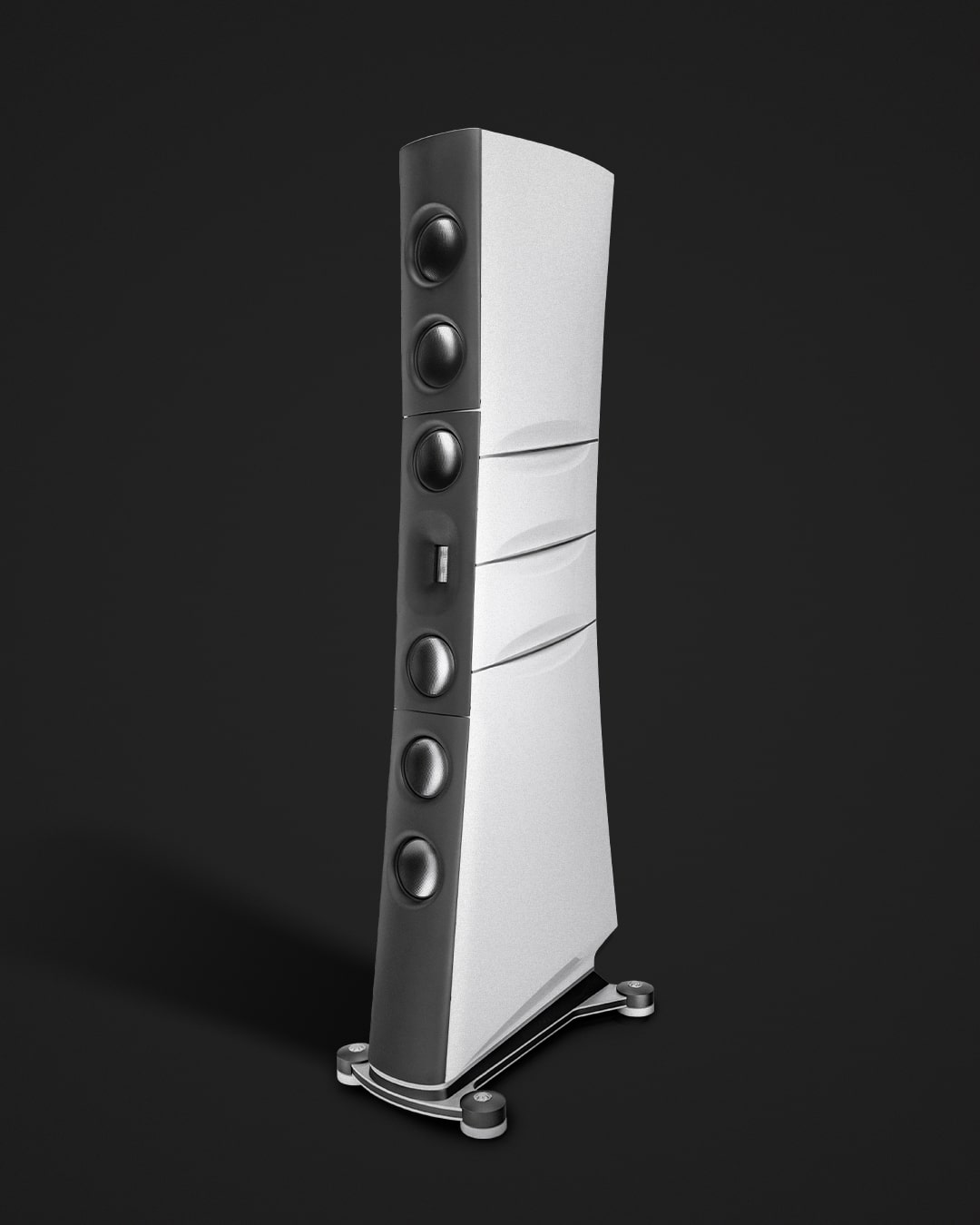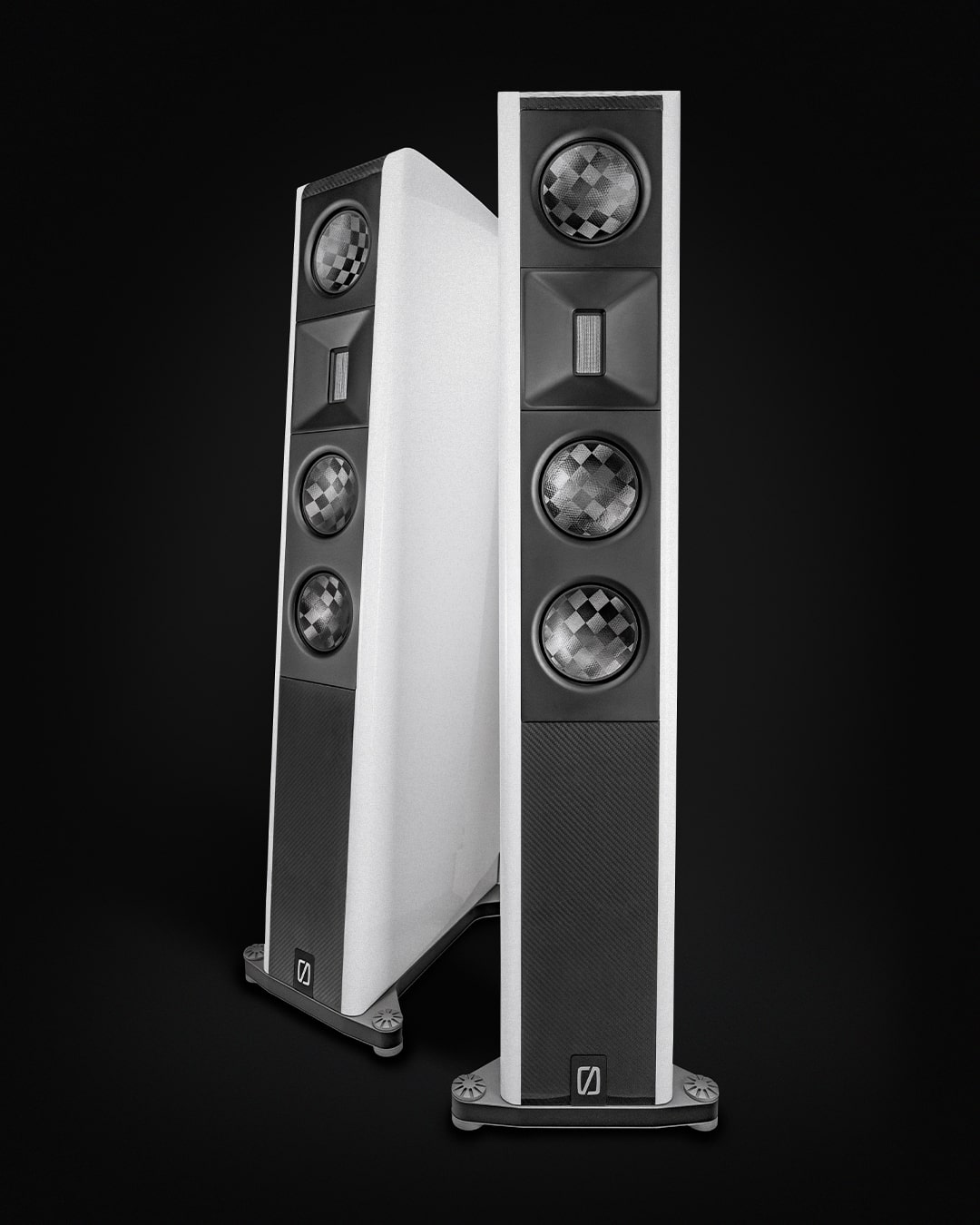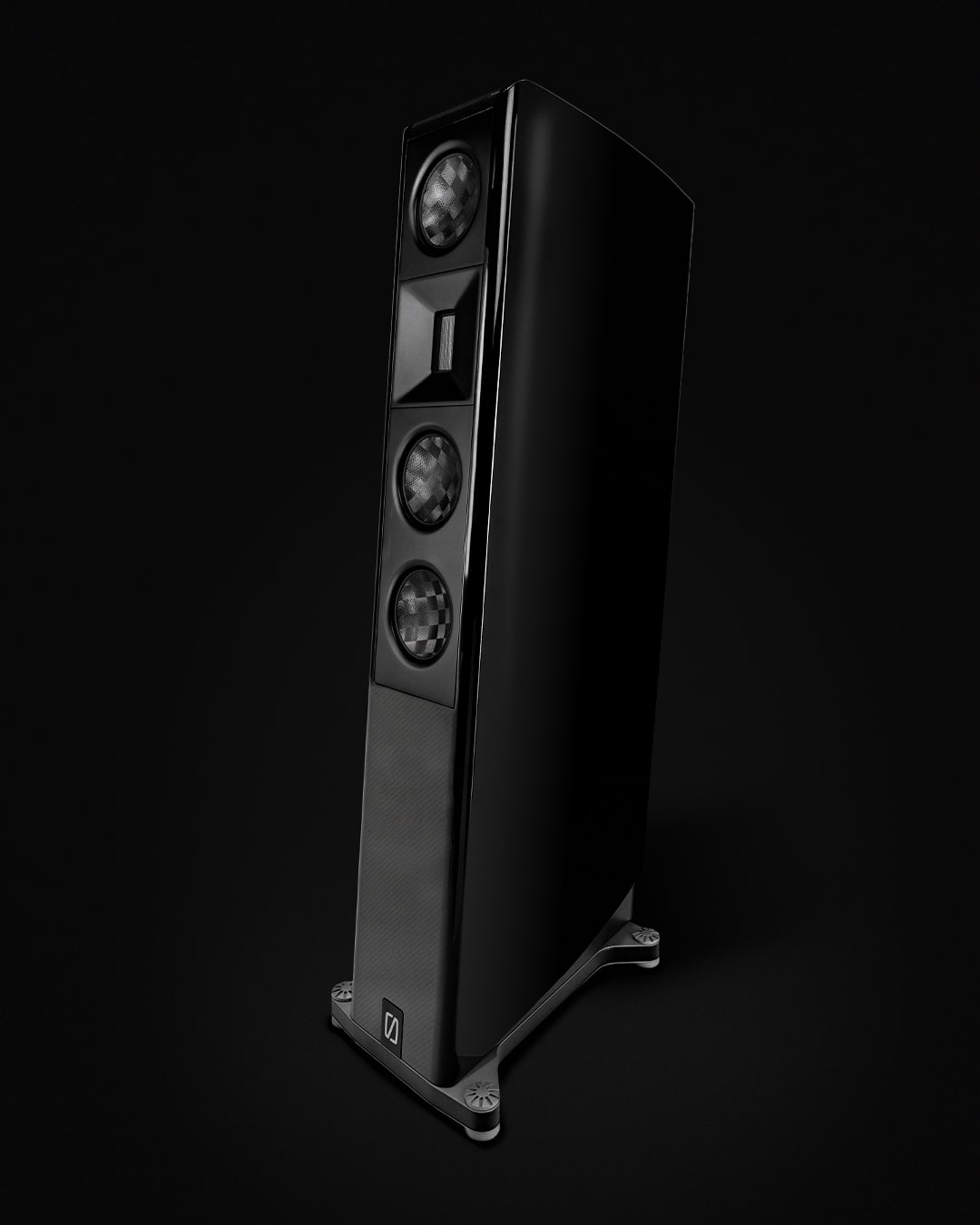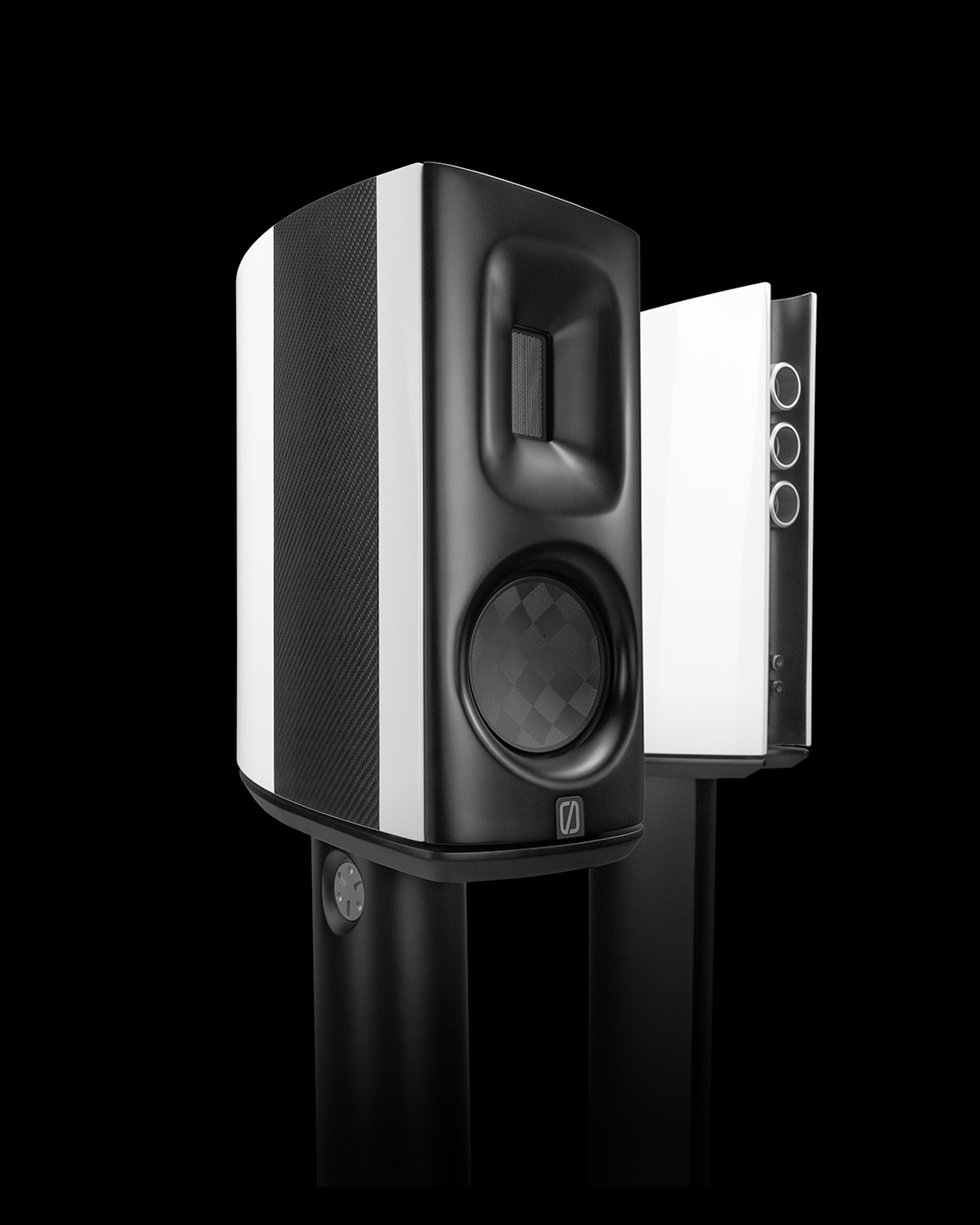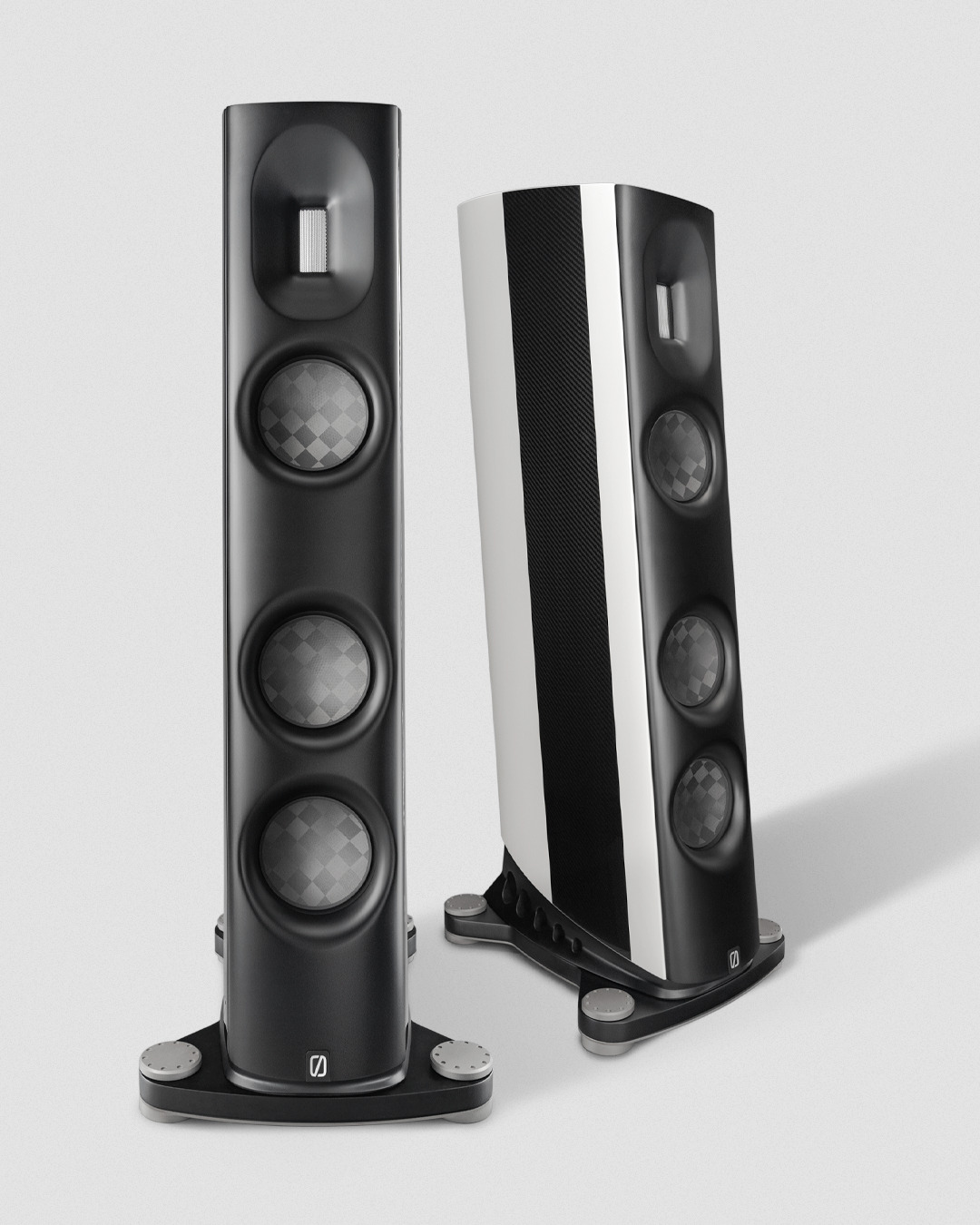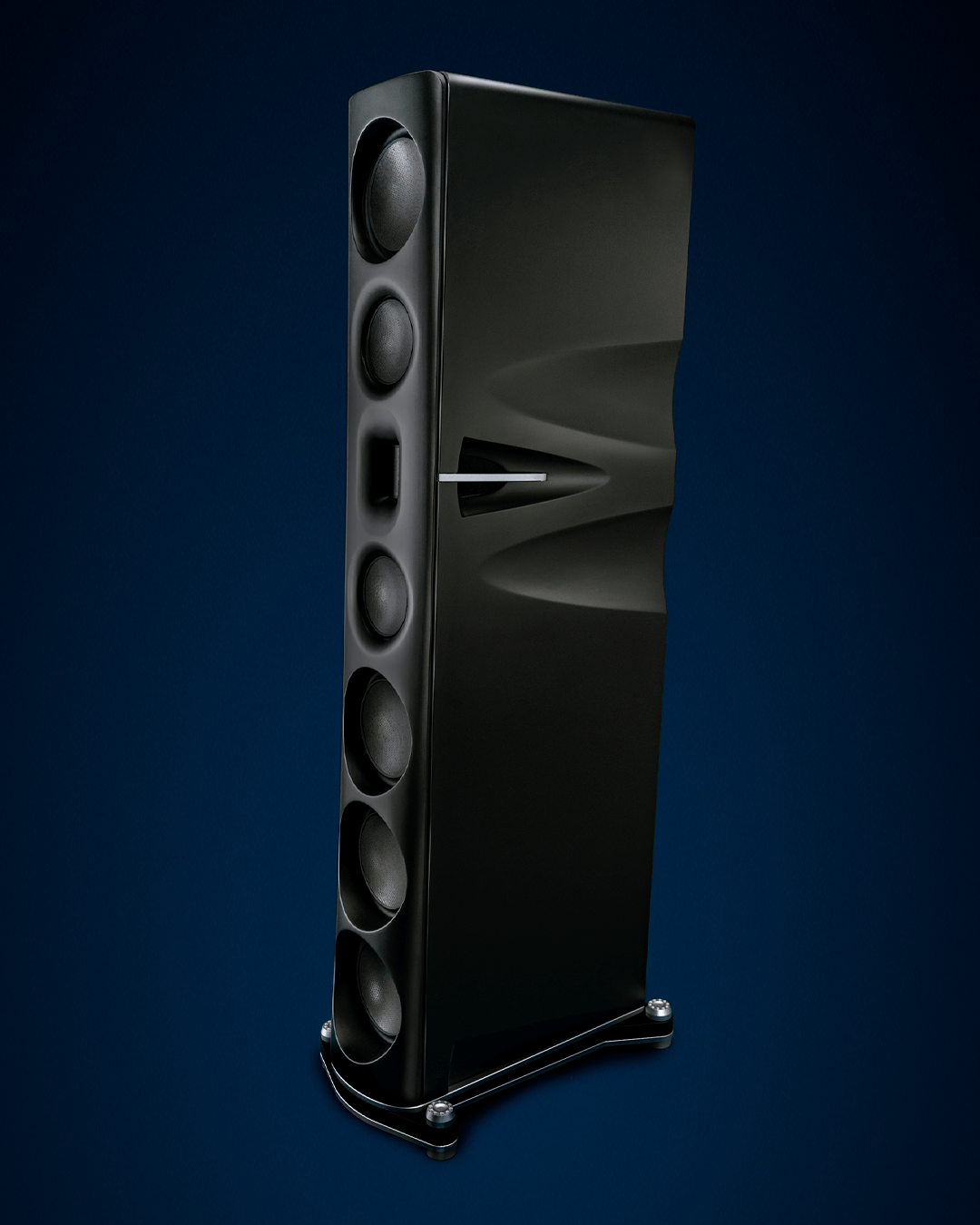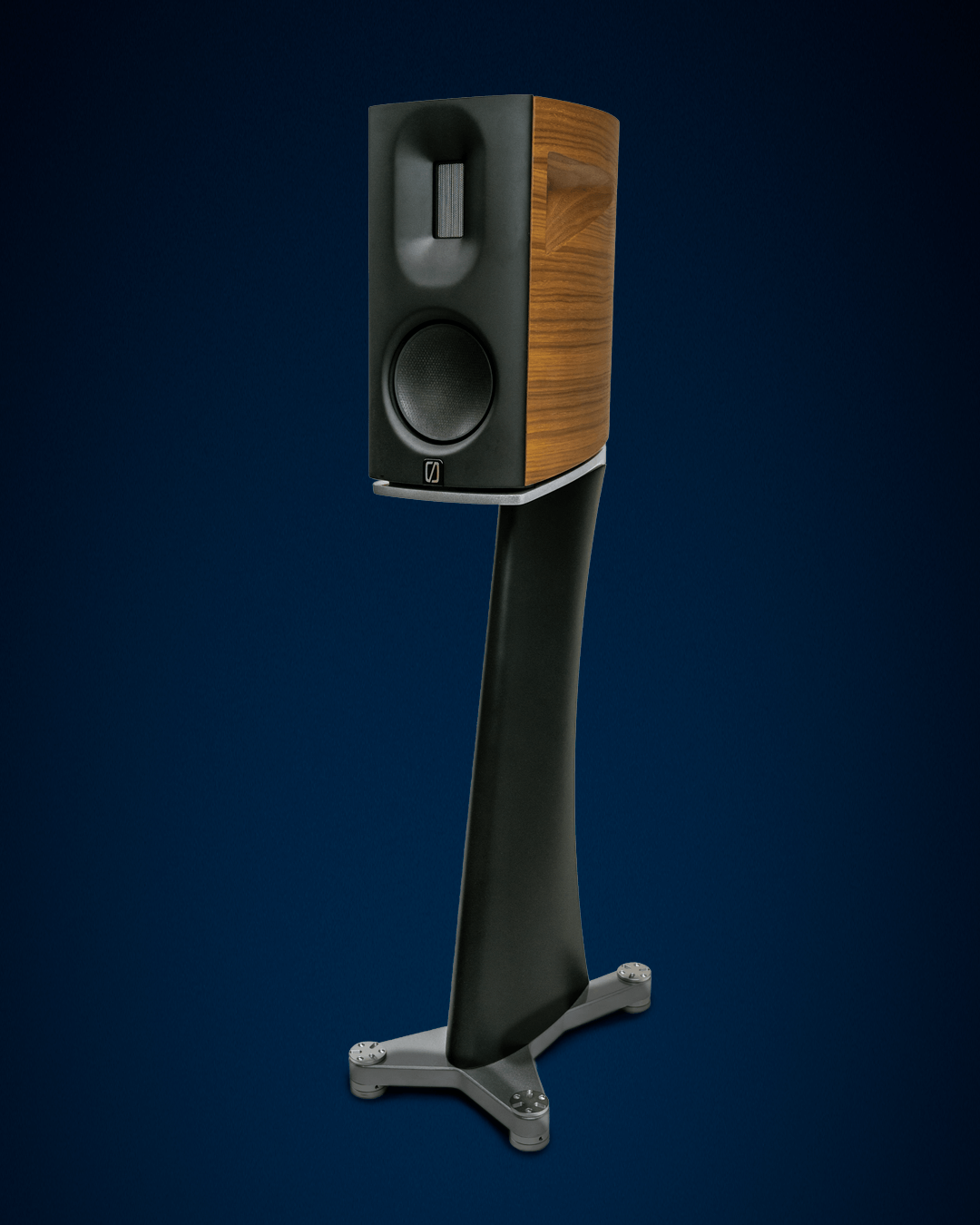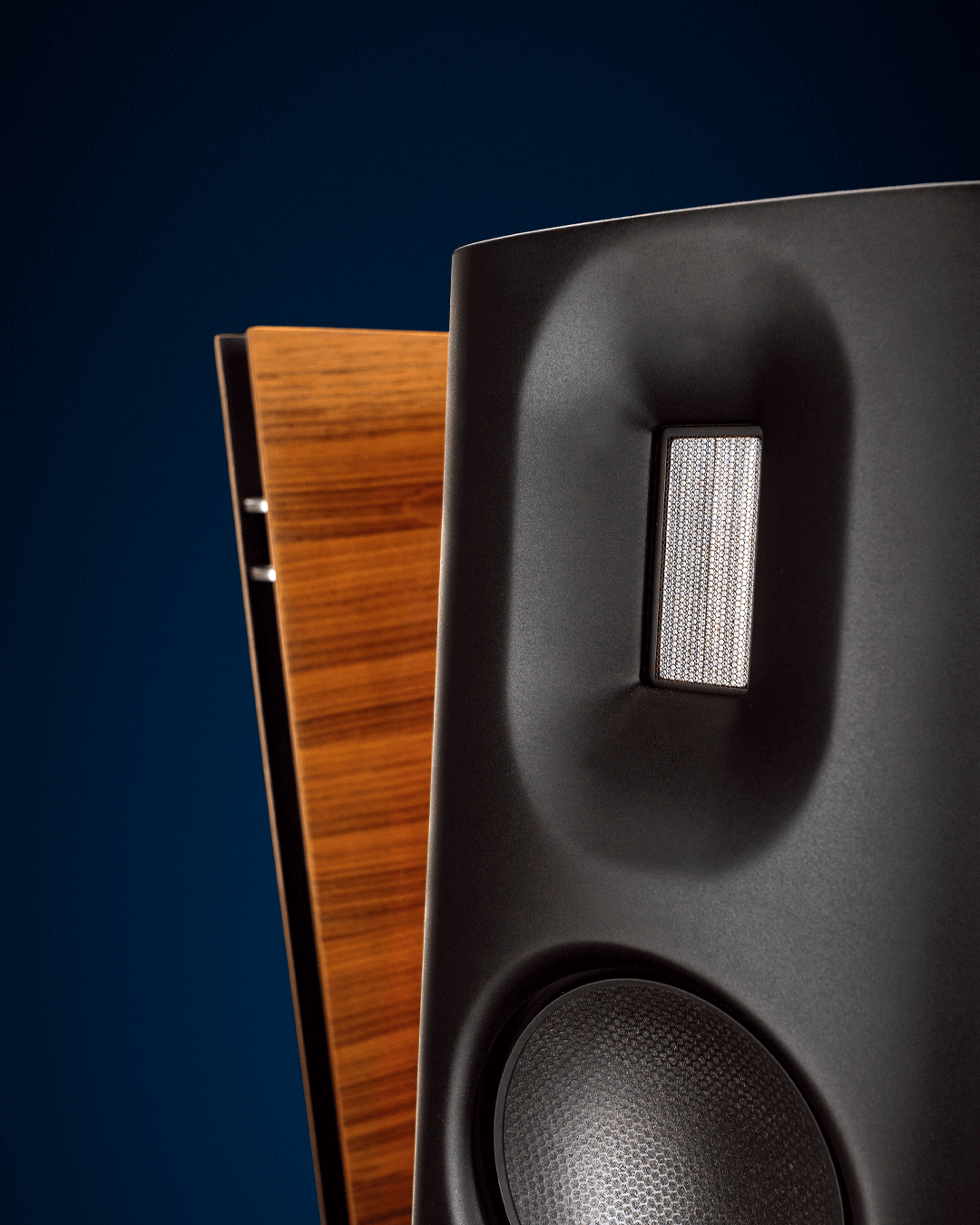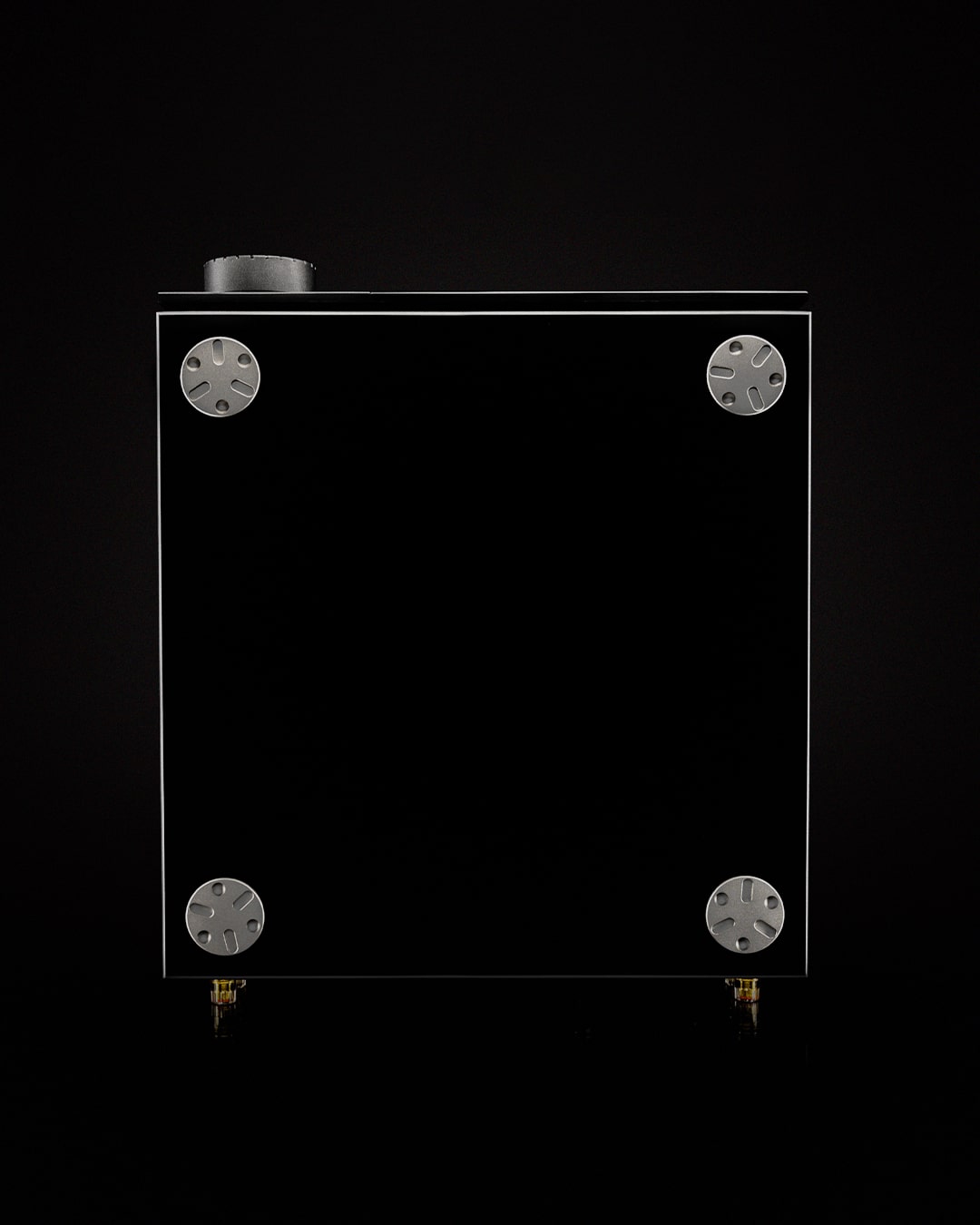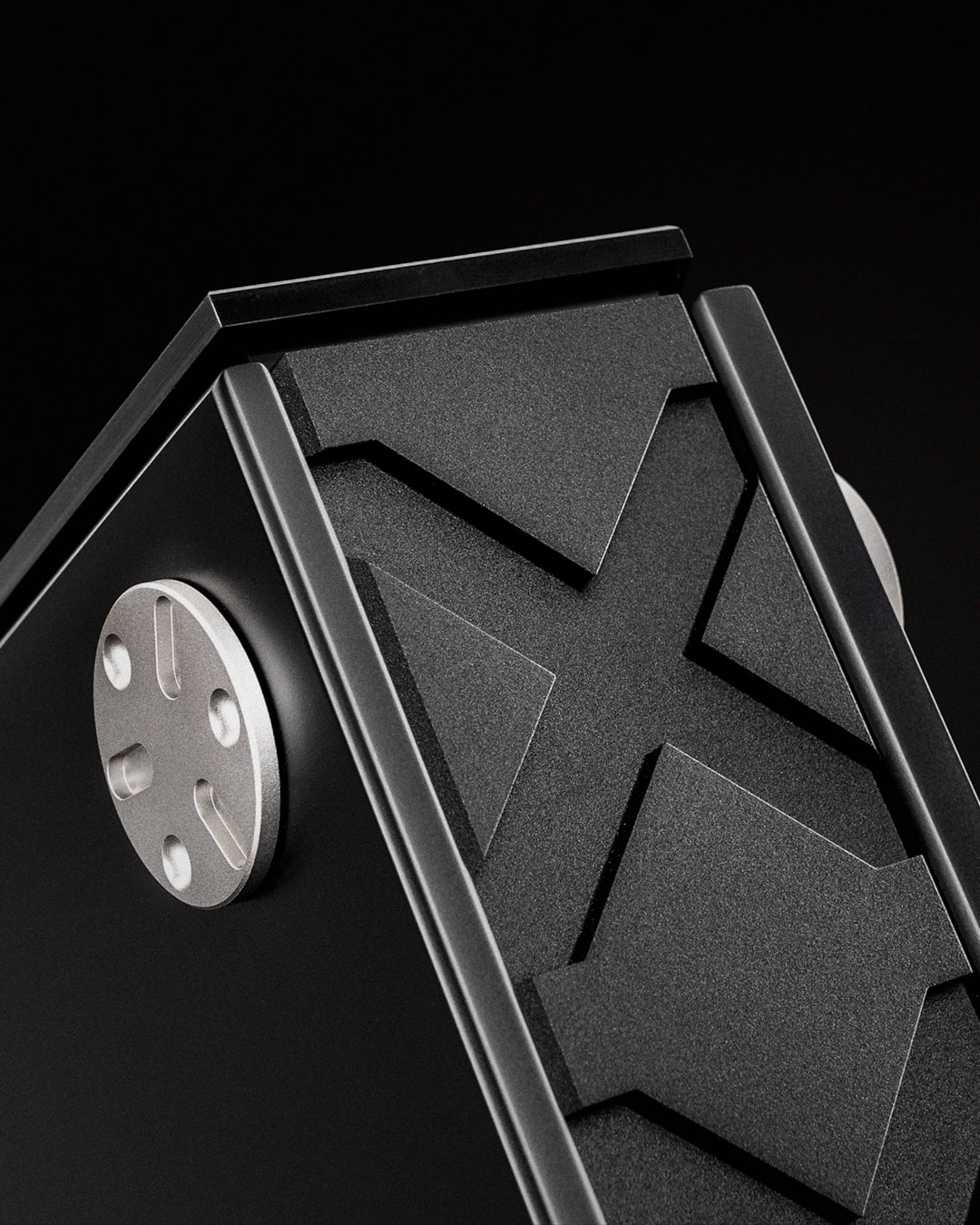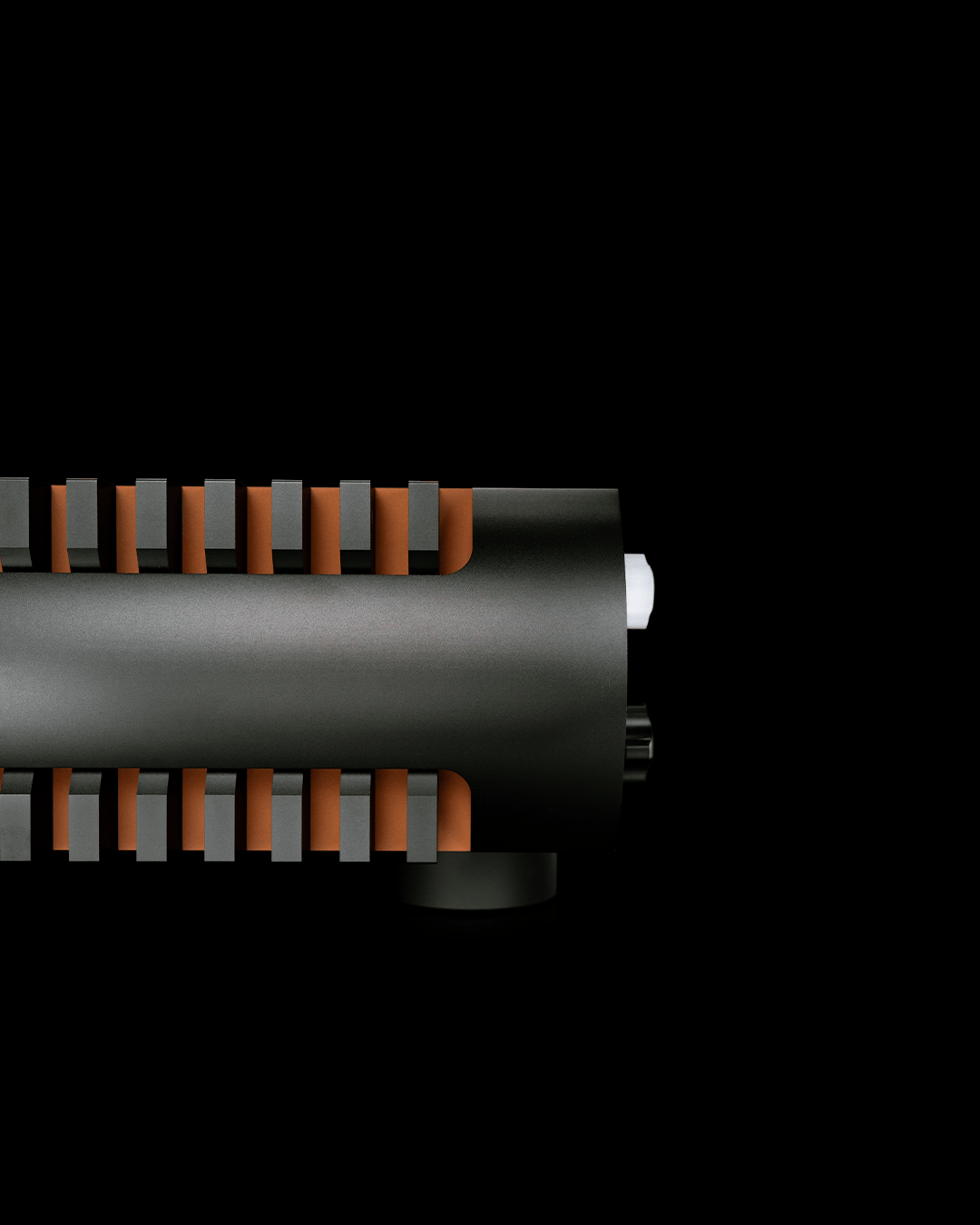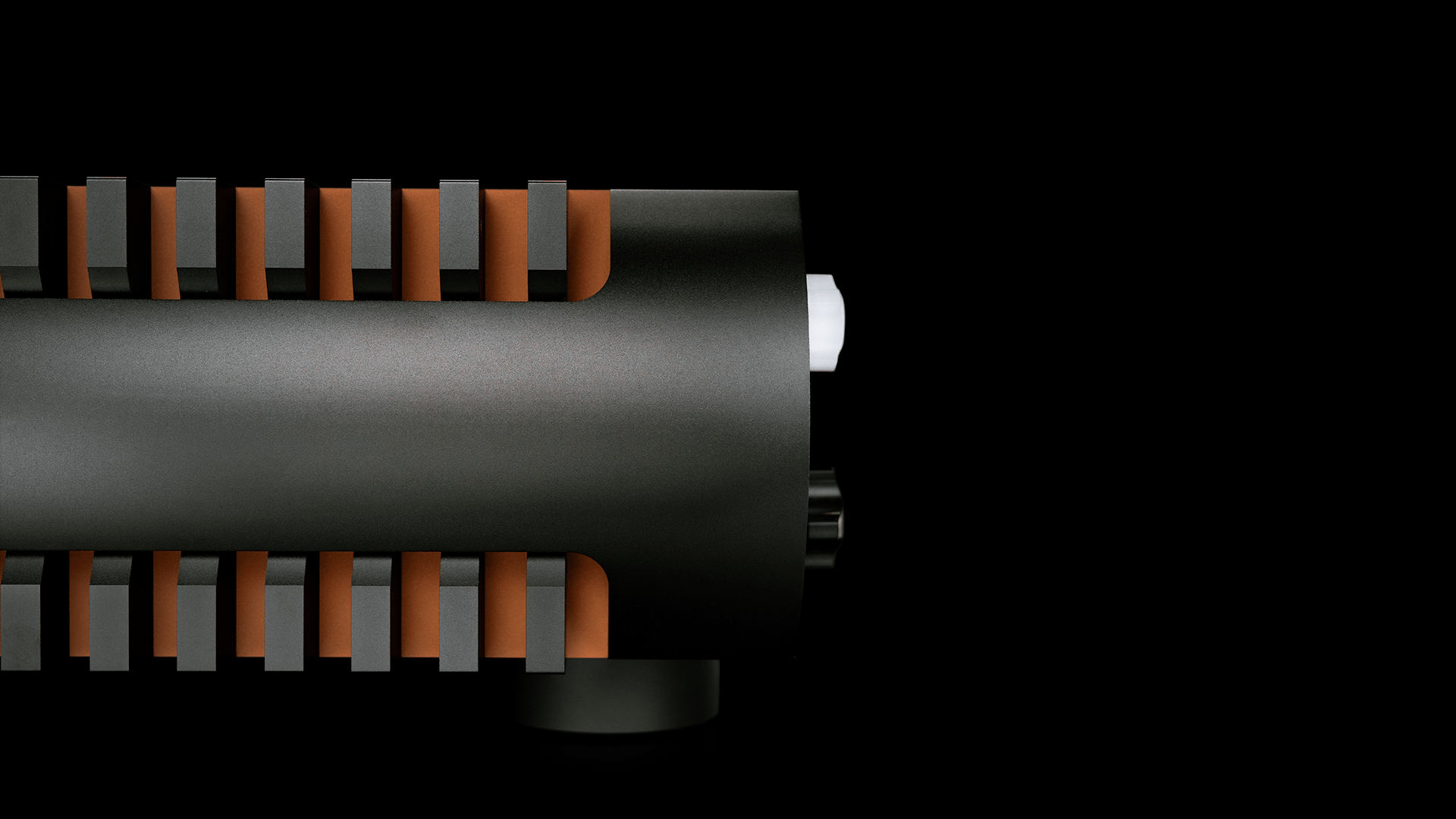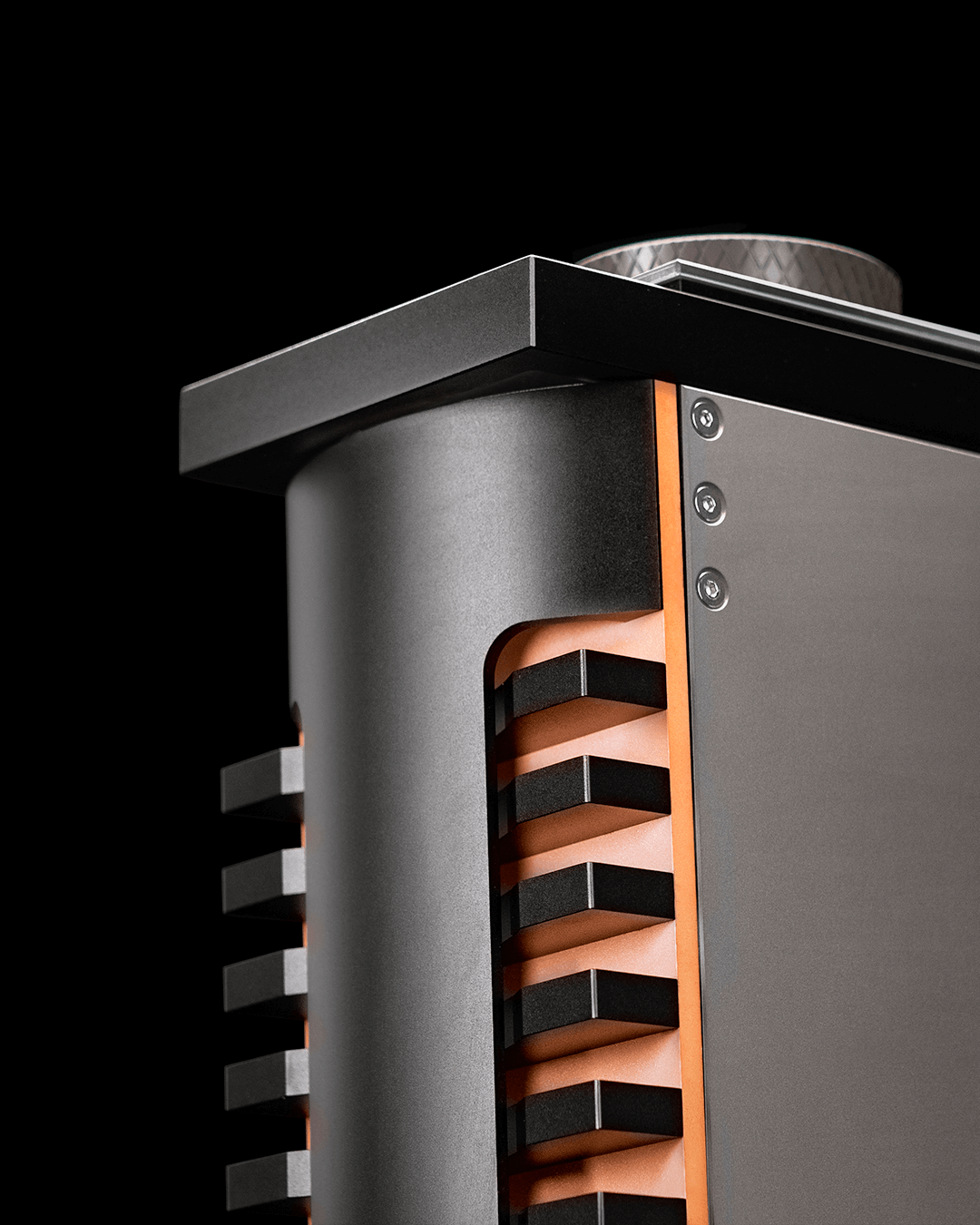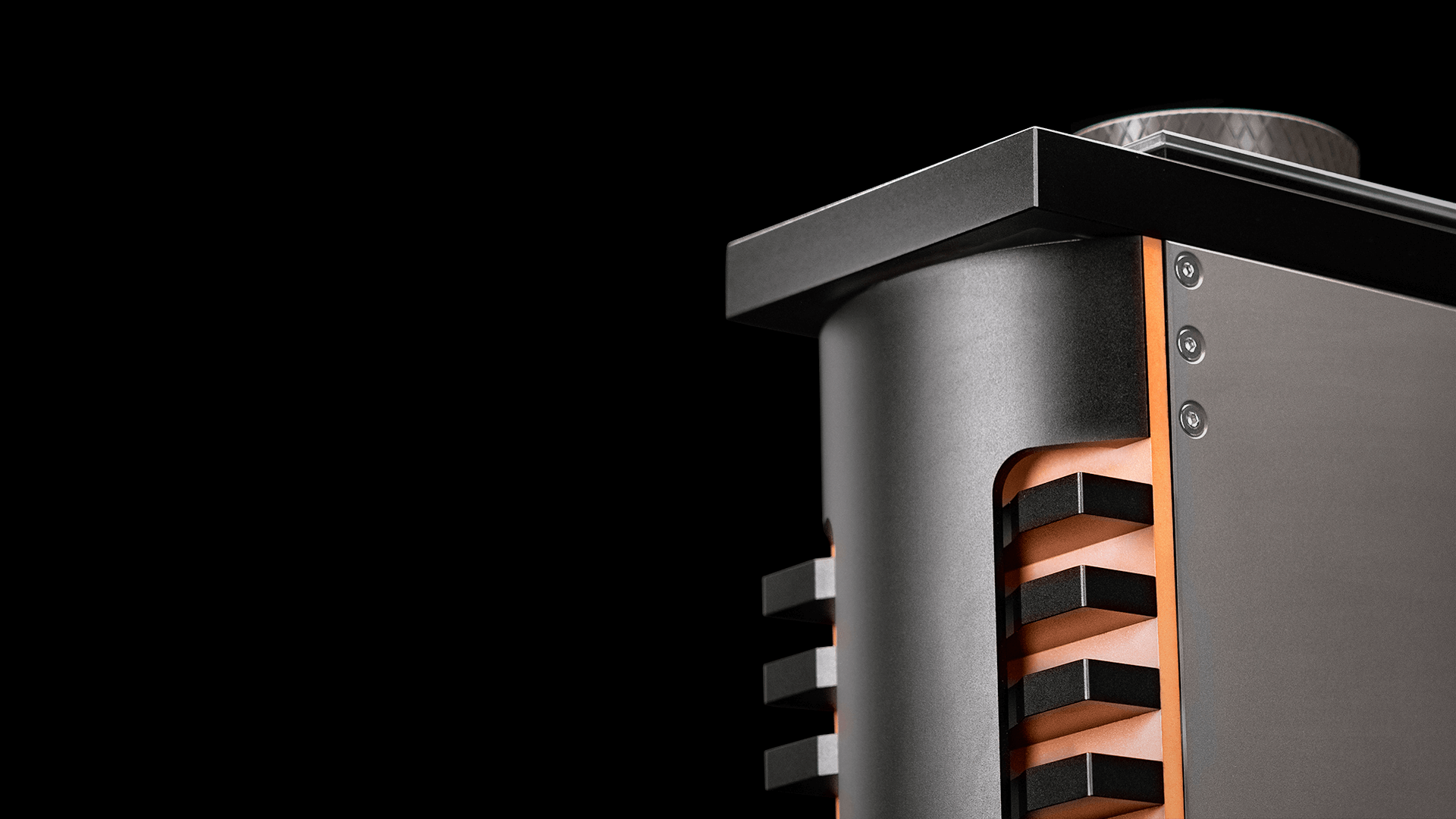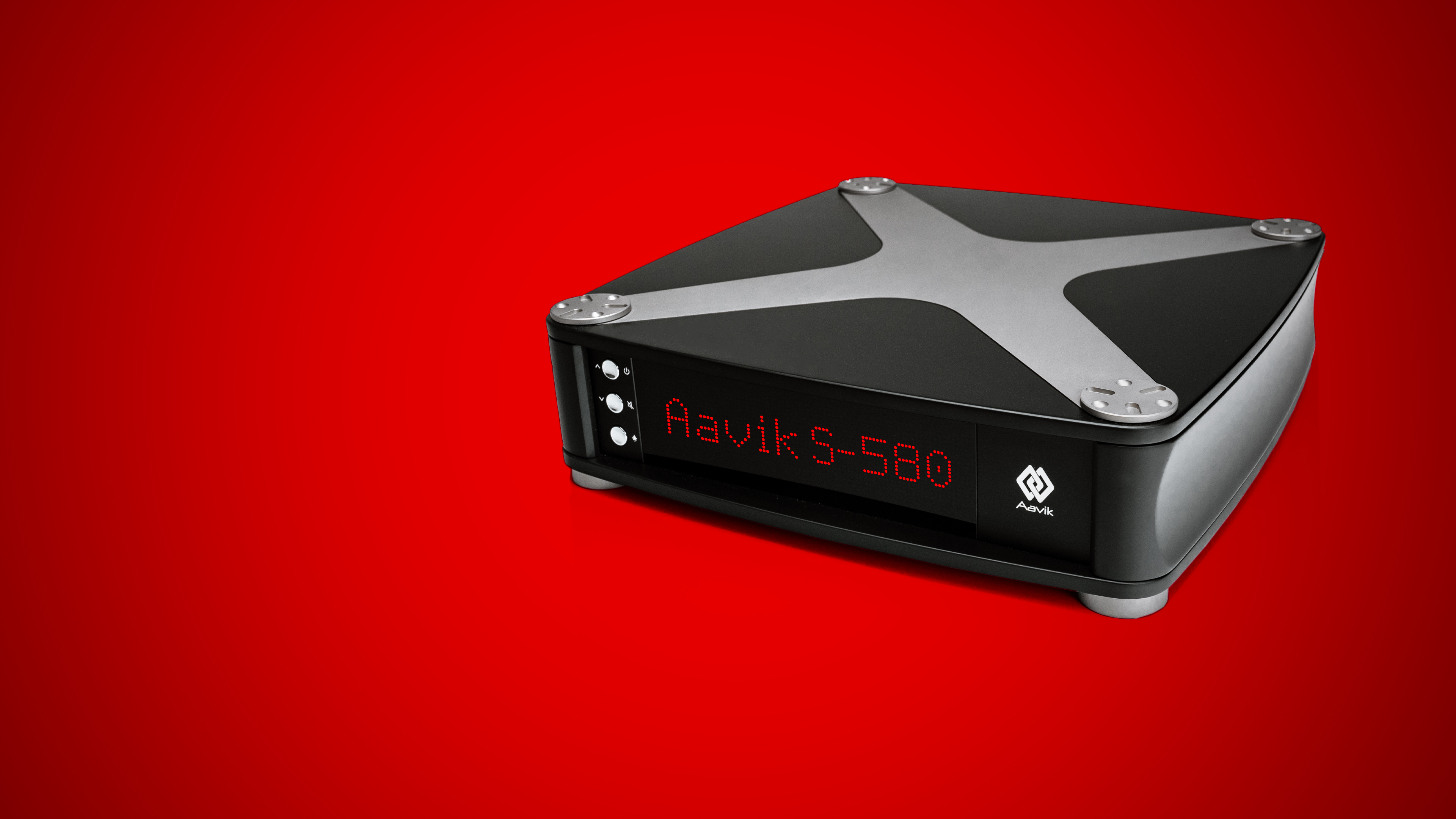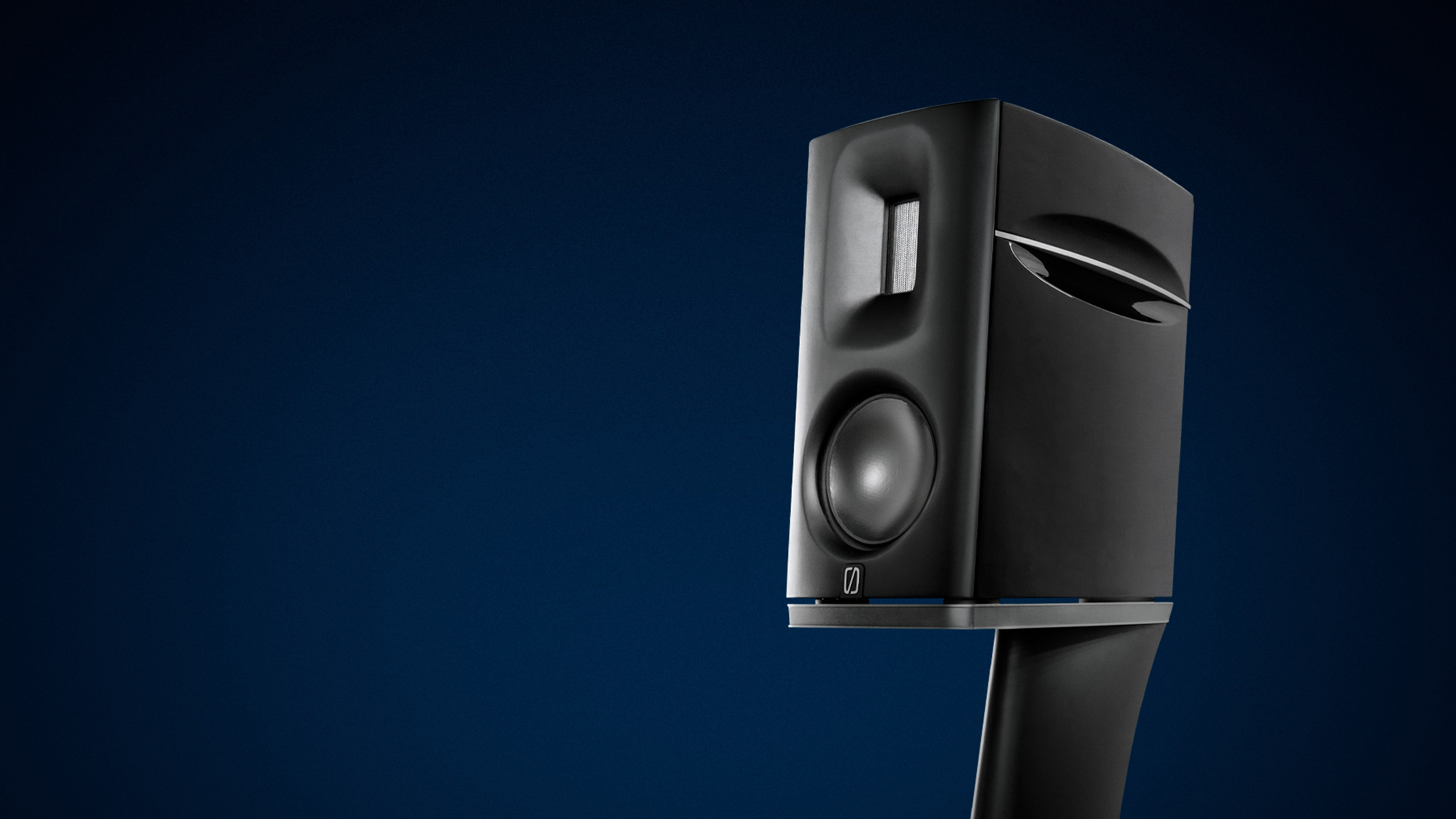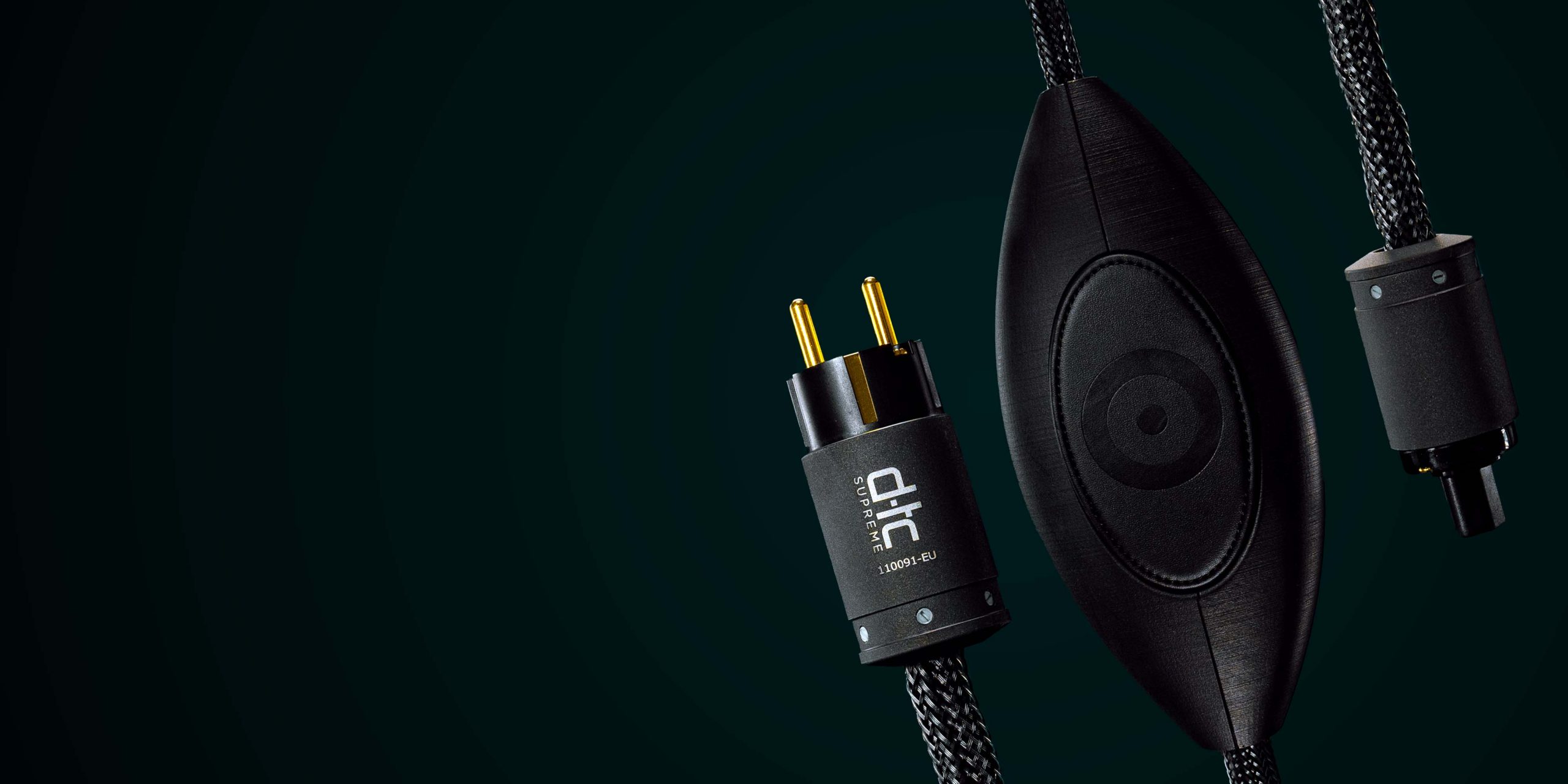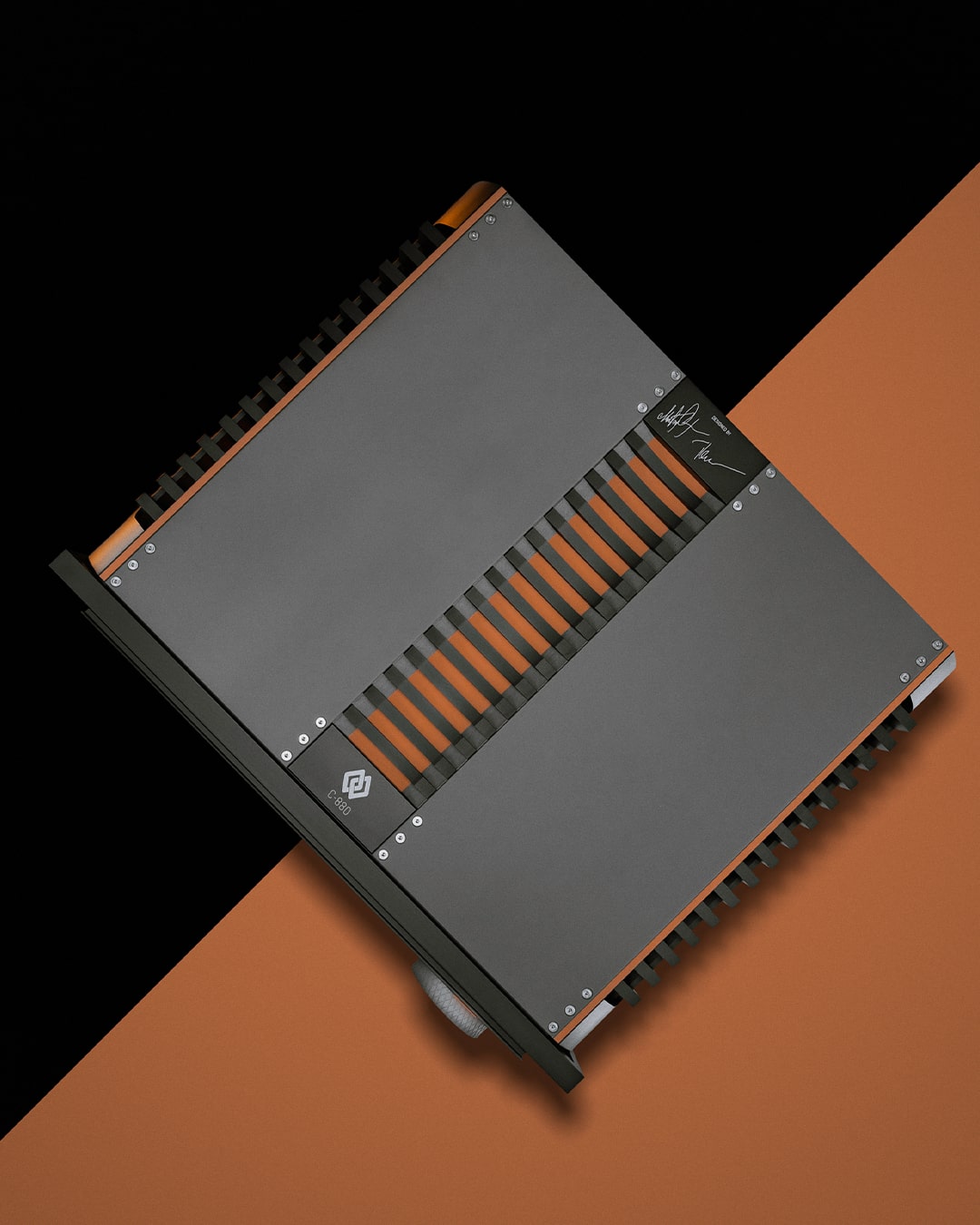

Control Amplifier
Aavik C-880
Powerful with a maximum of musicality
To create the best and most effective control section, Aavik’s engineering department has carefully tested and evaluated each electronic component to ensure both the lowest possible noise floor and further refinement of the signal. The ultimate goal of this thorough approach is for the Aavik C-880 amplifier to unlock a dynamic musical range that projects even the smallest musical details onto a palpably larger soundstage with an extremely quiet background.
Technologies and Components
By dividing the Aavik I-880 integrated amplifier into separate power and control amplifiers, we have created the Aavik P-880 and the Aavik C-880. This seperation has reduces the noise floor, to an even lower level, refine the signal, and increase the power resources. Furthermore, this division has created space for new technologies, which have further contributed to a even larger sound stage with an extremely quite background.
Resonant mode power supply
This Aavik series is designed to ensure massive power resources with ultra-low noise. Unlike the square waves used by conventional switch mode power supplies, this Aavik series boast a resonant mode design which is principally driven by sine waves.
When more power is needed, the operating frequency increases, which, in turn, has the advantage that the power density also increases, thus allowing higher peak power when required by the music.
The noise floor in the raw power supply is extremely low but could be even further lowered by the ultra-low noise regulators supplying the different parts of the circuit. The noise of these regulators is measured in a few microvolts respectively nanovolts, which is significantly lower than the noise level of conventional regulators.
The principle of a traditional class A power supply is to create switching noise. This happens when the large capacitors have to absorb current from the transformer. Current can only flow into the capacitors when the voltage on the outside is less, so when current is needed, the voltage across the capacitors will be lower than the 50/60 Hz cycle. Although defined as a linear power supply, there are a lot of current transients flowing in these power supplies.
The Aavik 880 amplifier has four 500W power factor corrected resonant mode power supplies. The 500w power supplies combined with the extremely large power banks mean that the amplifier can deliver peak currents in excess of 80A, so it is not the power supply in the Aavik 880 amplifier that will limit how much you can feed into your speakers in transient and they will never switch .
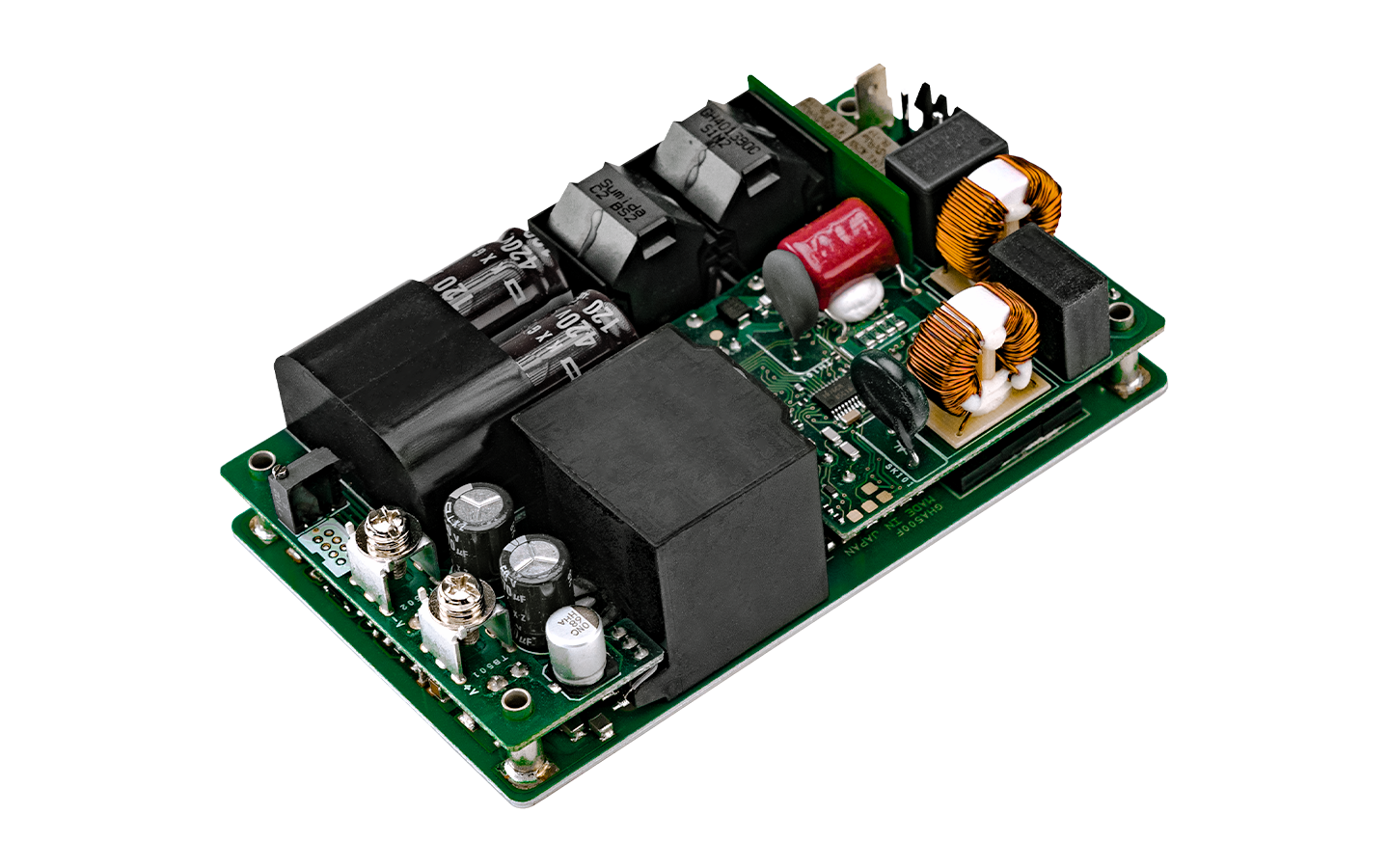
The 880 cabinet design
A study of materials and shapes
The exterior design of the Aavik 880 amplifier is the result of Flemming Erik Rasmussen’s artistic and aesthetic work. However, his design philosophy is and always has been that design must serve purpose. The cabinet of the Aavik 880 amplifier was designed primarily with the goal of maintaining the best audio characteristics of the electrical design, i.e. the lowest inductance, reducing hysteresis to an absolute minimum, and ensuring excellent resonance control. In addition, since this was a Class A amplifier that was to be developed, there were some predefined premises for the design. With these goals in mind, the design process became a study of shapes and materials that opened up a unique and constructive synergy between Flemming Erik Rasmussen and Michael Børresen.
In addition, the amplifier features cooling elements on the sides and top that clearly bear Flemming’s design signature. The outer part of the volume button is covered with titanium, and the control panel is designed as a large LCD touchscreen display.
The choice of materials, as well as the interior and exterior design, are the result of Fleming and Michael’s collaboration and are characterized by functionality, but also by a very aesthetic and elegant design.

Bottom plate sandwich construction
The bottom plate is designed as a sandwich construction with a copper plate, a heavy compact laminate plate, and a titanium layer on the bottom. This unique sandwich construction ensures minimum resonance and supports a natural and organic sound.
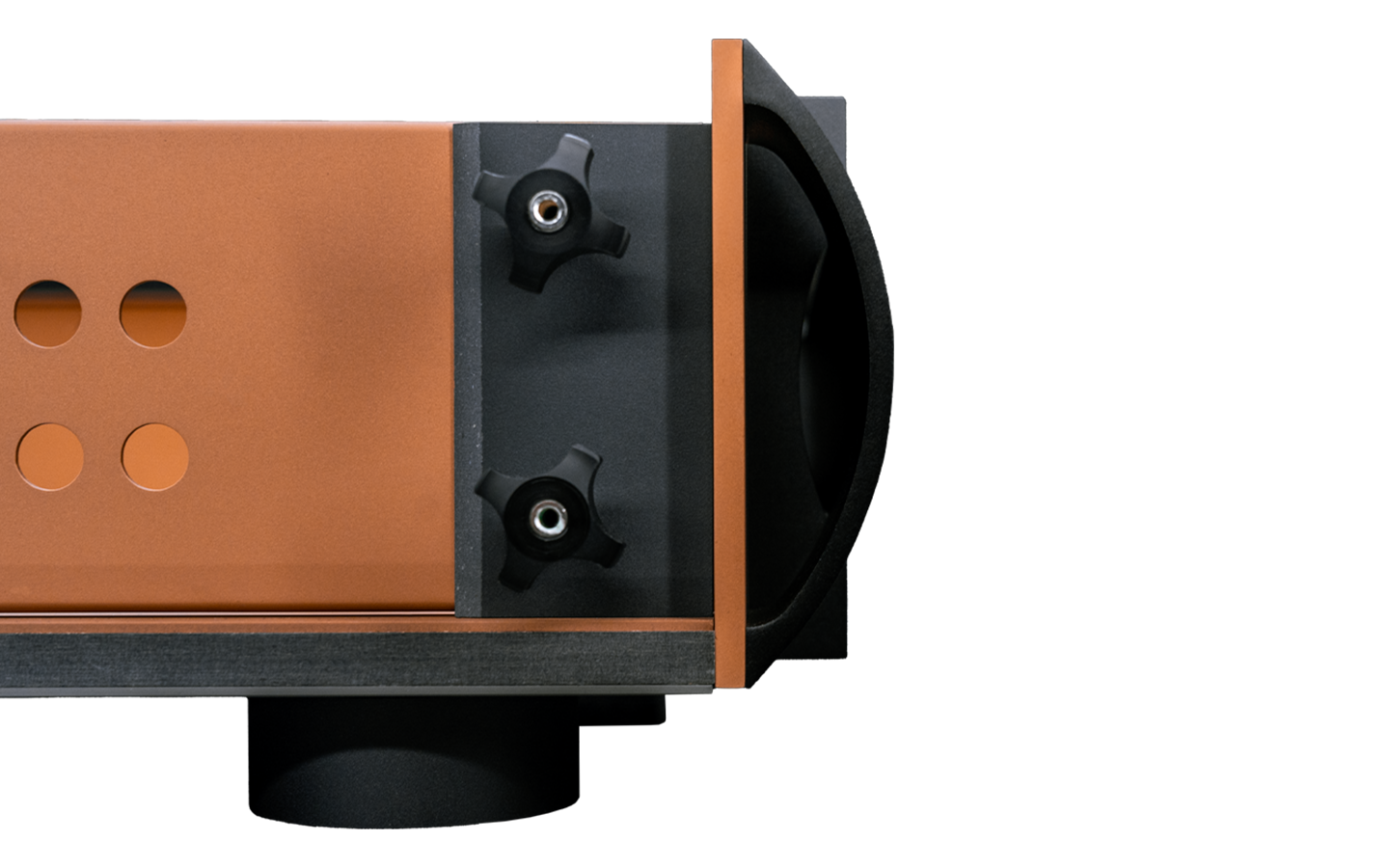
The solid copper enclosure
Based on Flemming Erik Rasmussen’s fascination with copper for its visual appearance and feel, and Michael Børresen’s insight into the sonic properties of copper, this material was chosen as a fundamental component of the design. As a result, the Aavik 880 amplifiers feature a solid copper enclosure. This results in a further reduction in hysteresis, lower output impedance, lower inductance, a positive effect on the damping factor, and cooler operation of the amplifier. All these components ensure that the music is reproduced with more energy and power.
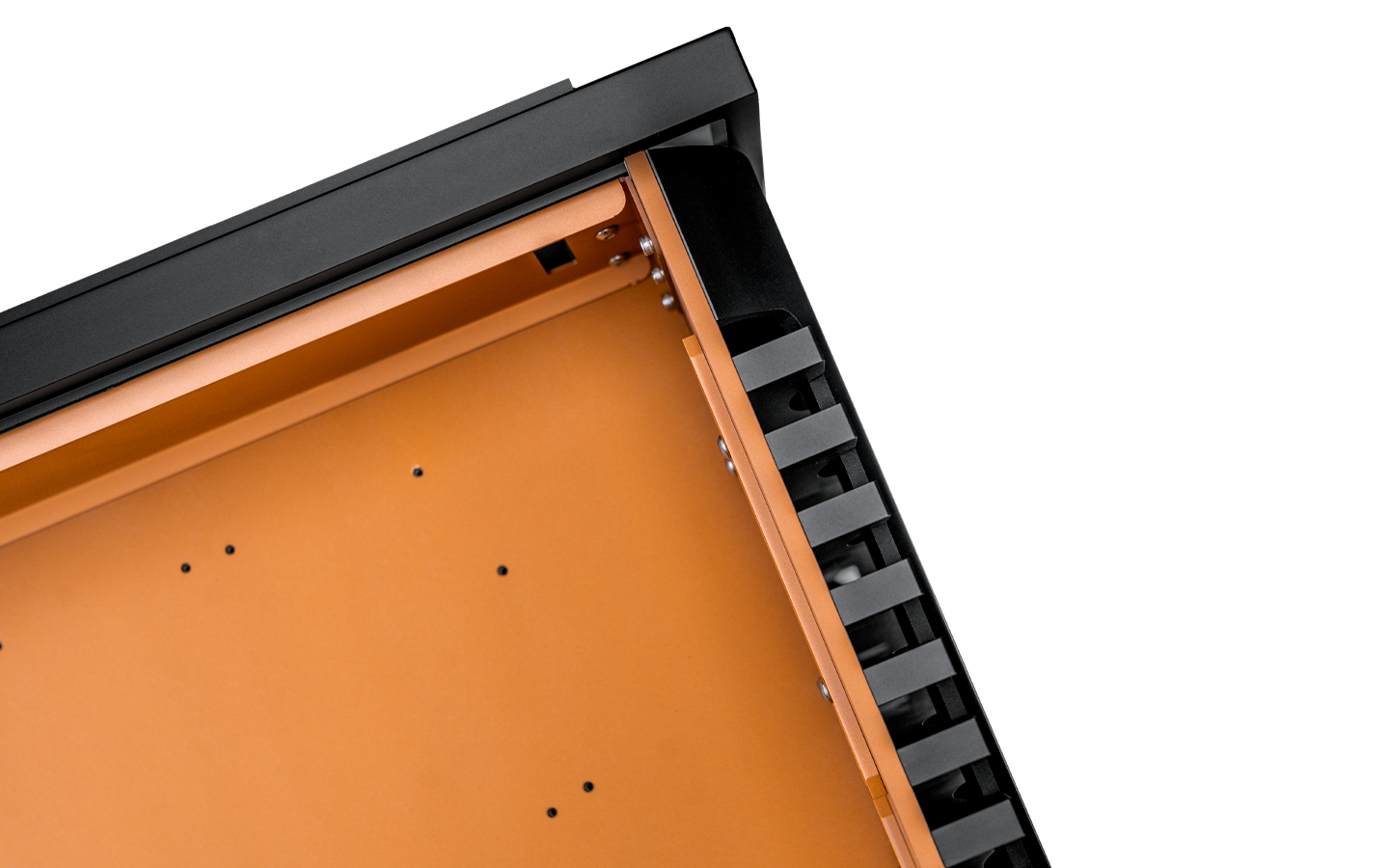
The Tesla coil principle
The principle is to have two coils that are wounded in each direction / a coil and a counter coil. In Ansuz words: “a double inverted coil” – the two coils are both carrying voltage – and when the Tesla coil encounters a voltage spike a counter spike is activated in order to eliminate the noise. As Noise spikes are pure voltage and carries virtually no charge, the cancelation is quite good, but not 100%. By adding more P-TC coils in parallel the performance increases. By implementing this the perceived blackness in the music improves significantly.
Ansuz Tesla coils are available in various types as they complement each other in terms of strengths /weaknesses.
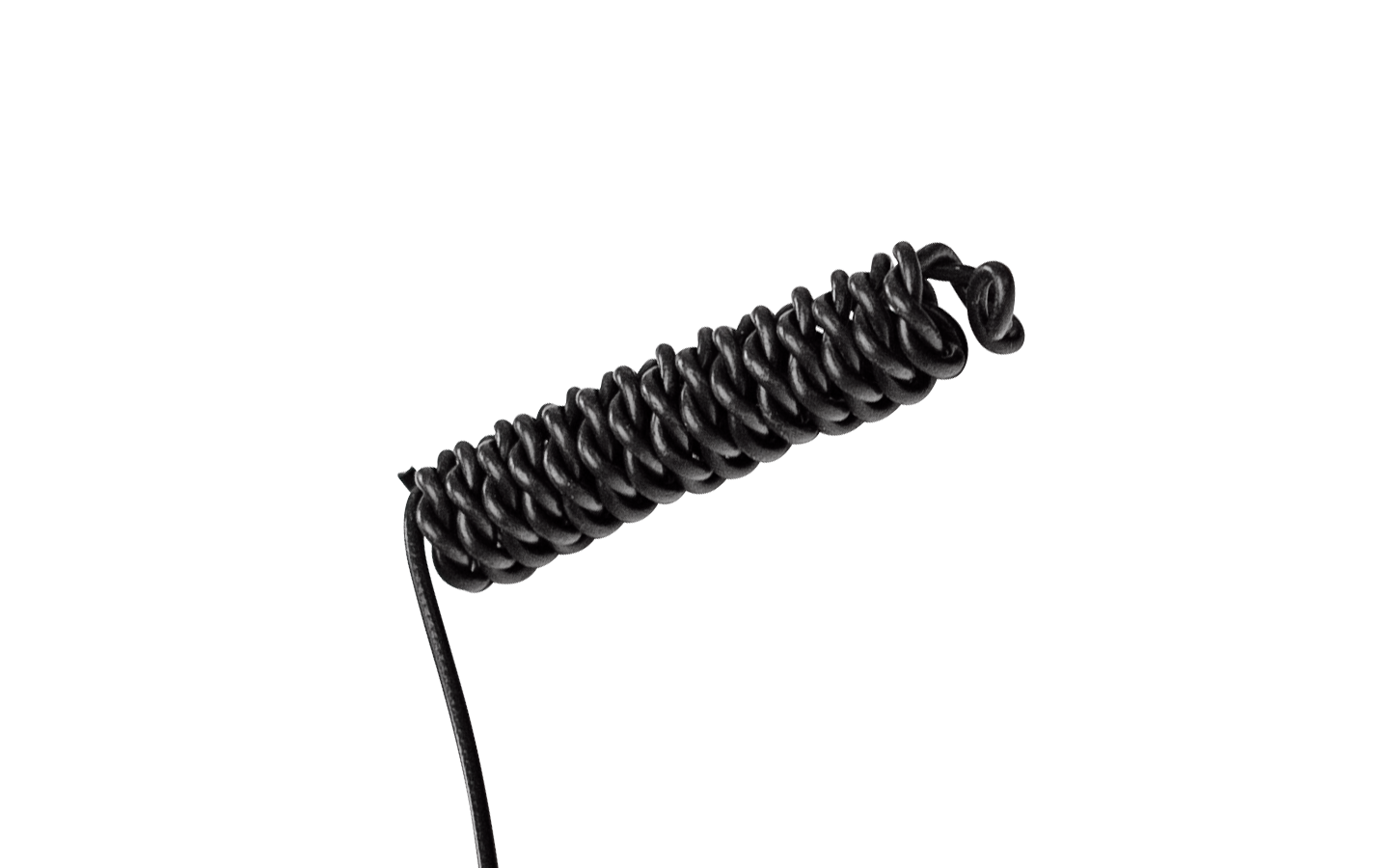
Active Tesla coil
Effective noise killer.
The active Tesla coils are power supplied which secures a remarkable lower impedance and thus a better ability to eliminate noise. The active version is about three to four times more efficient than passive Tesla coils.
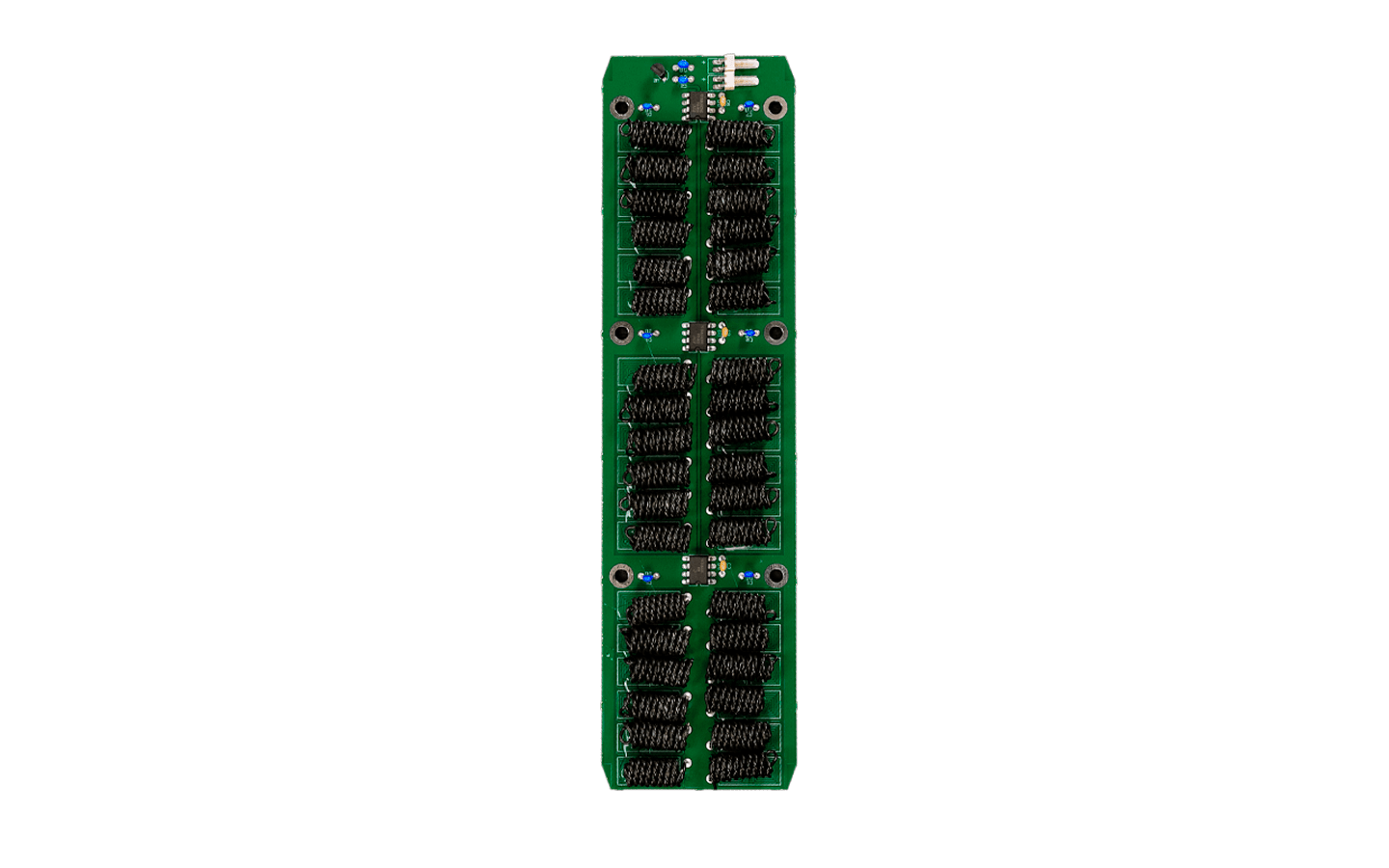
Active square Tesla coils
Impressive noise reduction.
The active square Tesla coils are embedded in our circuitry boards – one coil on the top and the counter coil on the rear side. The principle is exactly the same as the active Tesla coil and thus a great ability to eliminate noise than the passive Tesla coil.
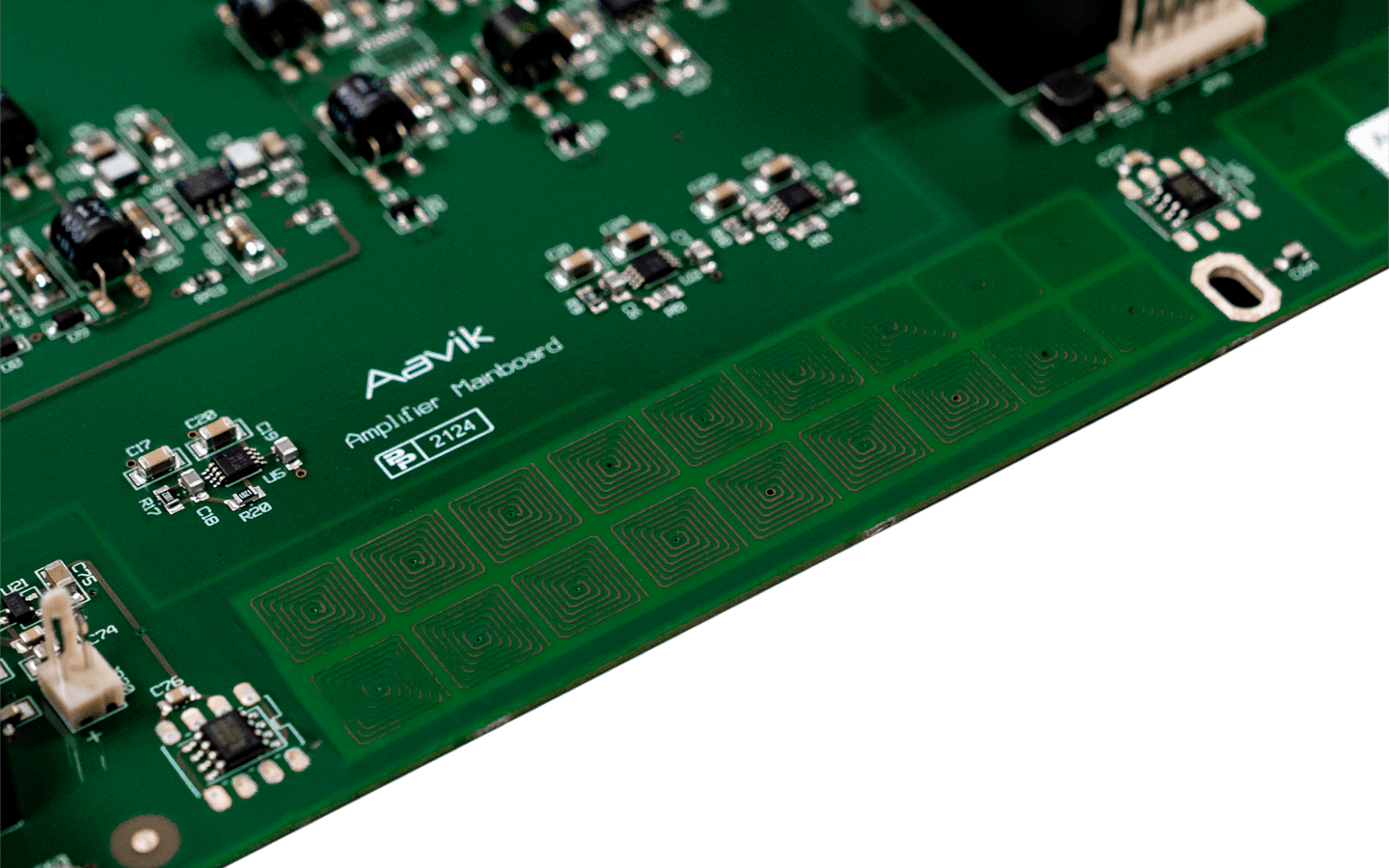
Analog dither technology 3rd generation
A 3rd generation of the Ansuz analog dither technology has been developed. Analog dither technology originated in radar, where it ensured a stronger signal and thus greater range. The active Tesla coils send pulsating signals at precisely defined frequencies. These signals are sent in anti-phase. This significantly amplifies the musical signal and eliminates the background noise floor.
Analysis and studies have led to new options – and a lot of listening has resulted in this 3rd generation design which is a further optimization of the most effective frequencies which opens the soundscape even more and with the tiniest details when it comes to reproduction of the recordings.
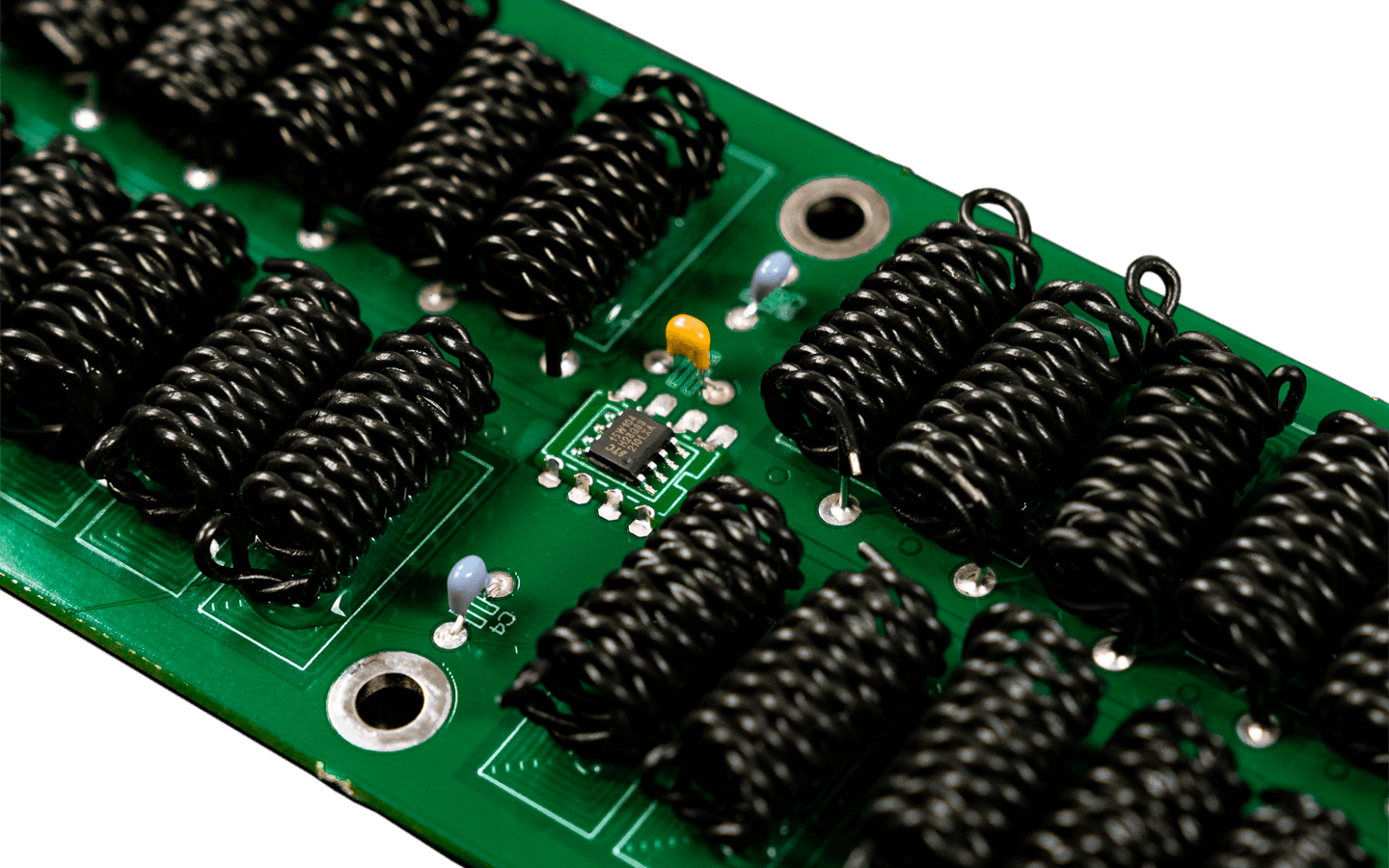
Active zirconium anti aerial resonance Tesla coil
Based on Ansuz general curiosity on the properties of different materials, Ansuz has implemented a zirconium bar in their anti aerial resonance coil design. This is another impressive upgrade to the Ansuz anti aerial resonance coil technology.
The properties of this zirconium bar allow for unprecedented resonance control resulting in outstanding musical refinement that creates a natural soundstage, unrivalled in its purity, precision and attention to musical detail.
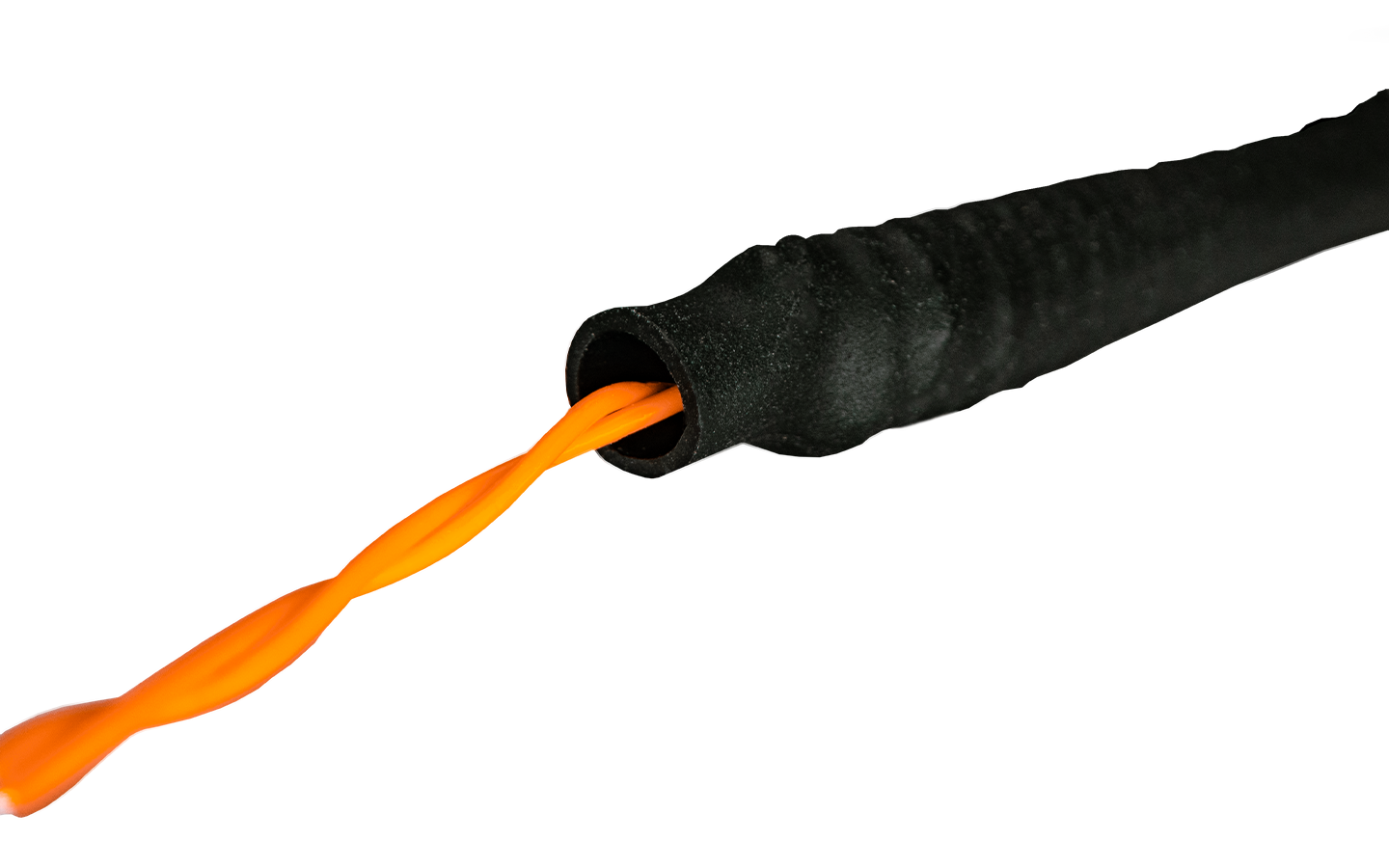
Switchless optical input board
LDR based.
The LDR (Light dependent resistor) is ultra quiet thanks to the switchless principle. The traditional switch arrays and relays are more noisy. They suppress subtle sound details and unnaturally color the tone.

Active Analog Crossover
The Aavik active analog crossover secures a precise timing in the delivery of sound signals to the receiving components. This is essential to avoid a harsh and compressed sound. The Aavik active crossover has been designed to either very precisely control a subwoofer or with the integrated low pass and high pass filter to control a 2.1 home theater system. Alternatively, Aavik’s analog crossover can function as analog room correction control.
Excellent and absolutely precise subwoofer control
Since the crossover is analog, there is no latency. The timing of the signal transfer to both the speakers and the subwoofer is absolutely precise. This results in an utmost pristine and authentic sound. Other conventional crossovers, such as DSP transport the signal through a digital circuit. This results in a latency of 15-20 msec. The effect of a failing precision in the timing of the signal transfer to the speakers, respectively the subwoofer, impairs an authentic audio reproduction, creates a compressed sound and adds a harsh tone to the music.
Control your home theater and your 2.1 audio setup
By using the low pass and high pass filter, the sound performance of your individual speakers can be optimized. When directing the low frequencies to the subwoofer, more energy to the main speakers will be released. To ensure an even volume of the speakers and the subwoofer, the gain on the high pass and the low pass filter can separately be controlled.
Analog Room Correction – prevent “Room Boom”, the annoying pressure resonance
Room correction is a matter of identifying and eliminating room resonance. The one specific resonance that creates an unpleasant and disturbing sound is a pressure resonance resulting from the given size of the room – subjectively, it feels like a “boom” emanating from the speakers. To eliminate this room specific resonance, the Aavik amplifiers can adapt their audio performance and make allowances for any given room size. Both the low pass and high pass filter allow the listener to set the exact frequency progress around those low frequencies which cause this disturbing ‘Boom’ effect.
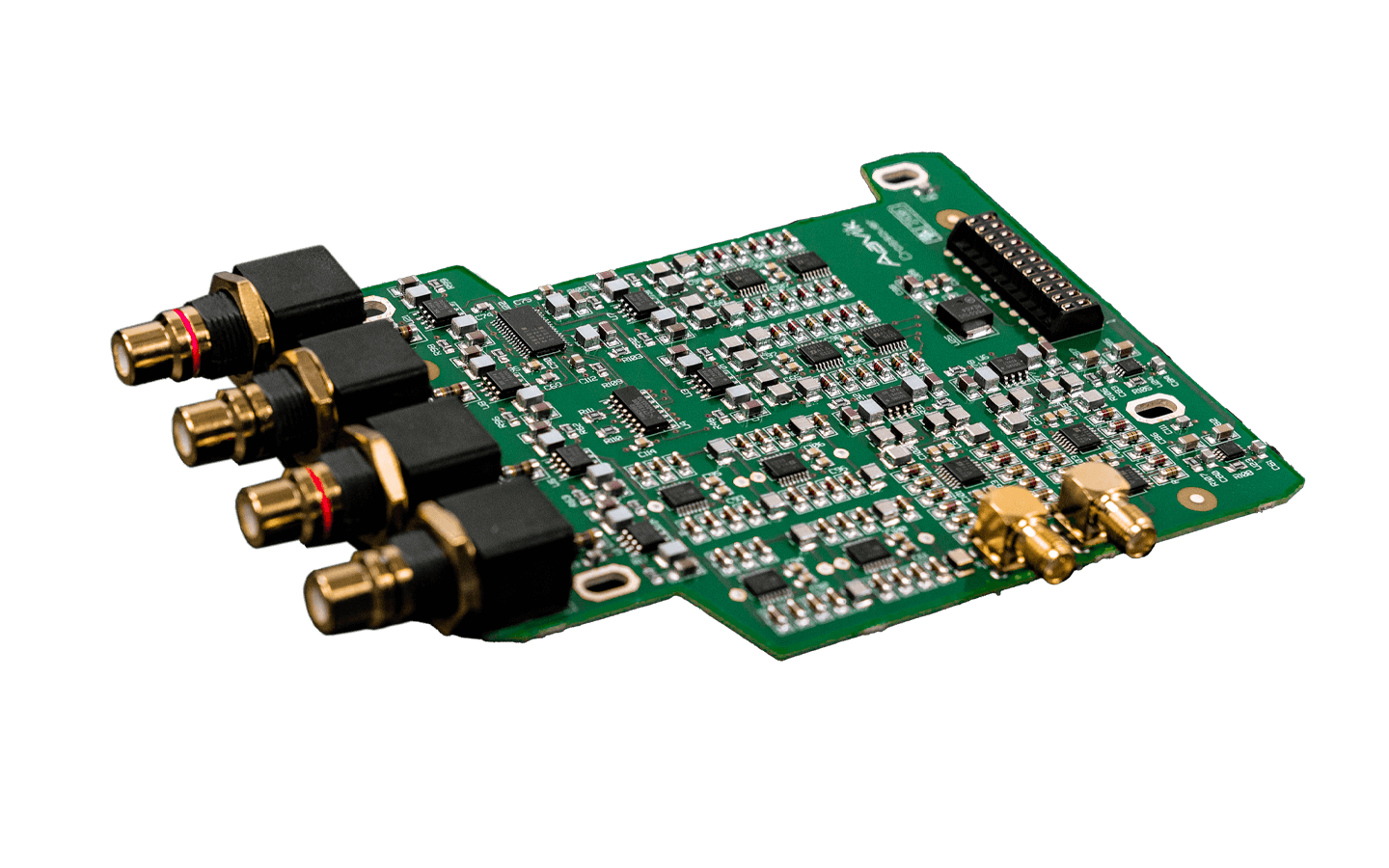
Read more
Close
REVIEWS & AWARDS

Read more
Close
Connections
Line in:
Pre out:
Amplifier Section
Aavik Noise Reduction
Power consumption
Dimensions and Weight
More about the speaker
Close
Control Amplifier Technology Table
Active Tesla coil
Active square Tesla coils
Dither Circuitry
Switchless Optical Inp…
Aavik Copper Inner Cha…
Aavik Titanium Resonan…
Active zirconium Tesla…
Aavik C-280
Active Tesla coil
72
Active square Tesla coils
156
Dither Circuitry
7
Switchless Optical Input Board
Aavik Copper Inner Chassis
Aavik Titanium Resonance Control
Active zirconium Tesla coil
Aavik C-580
Active Tesla coil
108
Active square Tesla coils
228
Dither Circuitry
10
Switchless Optical Input Board
*
Aavik Copper Inner Chassis
*
Aavik Titanium Resonance Control
*
Active zirconium Tesla coil
Aavik C-880 / Control Amplifier
Active Tesla coil
314
Active square Tesla coils
633
Dither Circuitry
36
Switchless Optical Input Board
*
Aavik Copper Inner Chassis
*
Aavik Titanium Resonance Control
Active zirconium Tesla coil
2
Find Dealer
Where to buy our products around the world.





